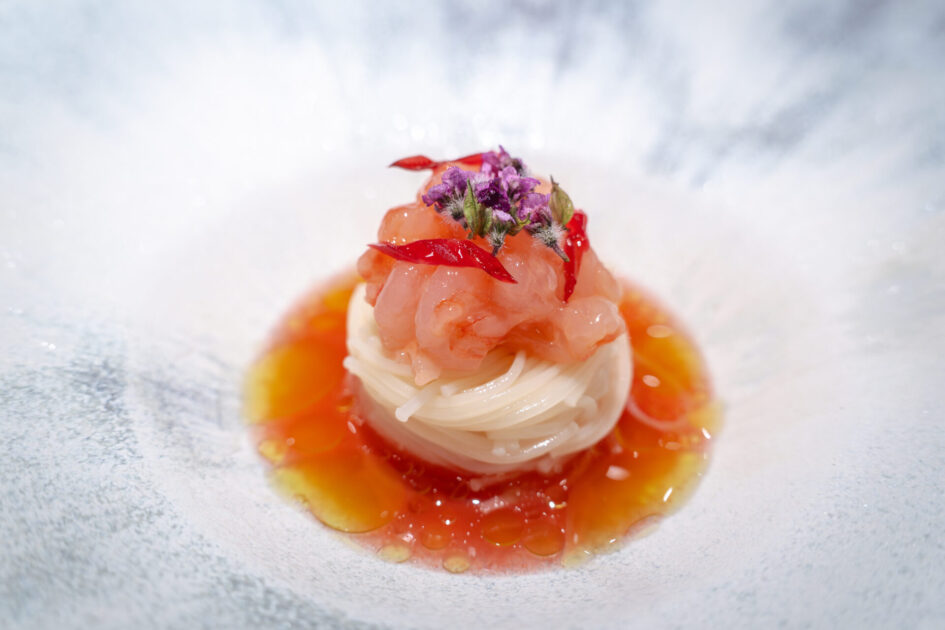CONTENTS
About Lito
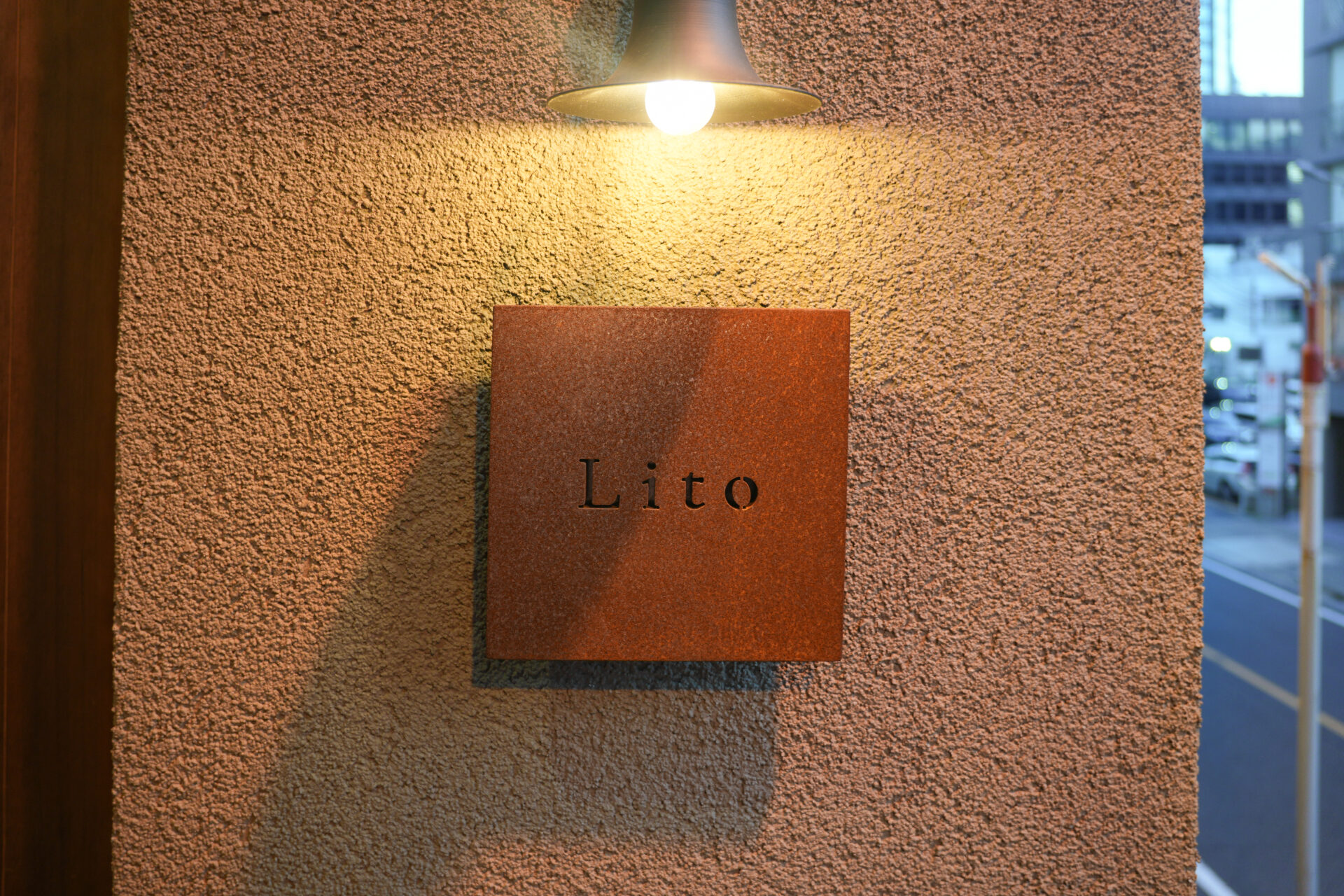
Concept
At Lito, diners are treated to refined cuisine that blends fermentation techniques with Italian sensibilities. The dishes are delicately crafted, showcasing a masterful balance of acidity that enhances the natural umami of each ingredient. Chef and sommelier Rihito Kubota brings a deep commitment to pairing food and wine, incorporating carefully selected ingredients and tableware from across Japan.
Chef Rihito Kubota
Having grown up watching his father, a professional chef, Rihito naturally found his path in the culinary world. His time training across Italy, particularly in Amalfi, instilled in him a Mediterranean sensibility that subtly informs his current creations.
After returning to Japan, he participated in launching Naz in Karuizawa, a modern Italian restaurant centered on fermentation. His relationship with Naz‘s chef dates back to their time in Italy, where they honed a precise technique for balancing fermentation and acidity.
Kubota later earned his sommelier certification and set out to create pairings that only a chef-sommelier hybrid could offer. He opened Lito in Nagoya, where he designs dishes that integrate aroma, acidity, and aftertaste, all served on meticulously chosen tableware.
Unbound by genre or technique, Kubota gently redefines what contemporary Nagoya cuisine can be.
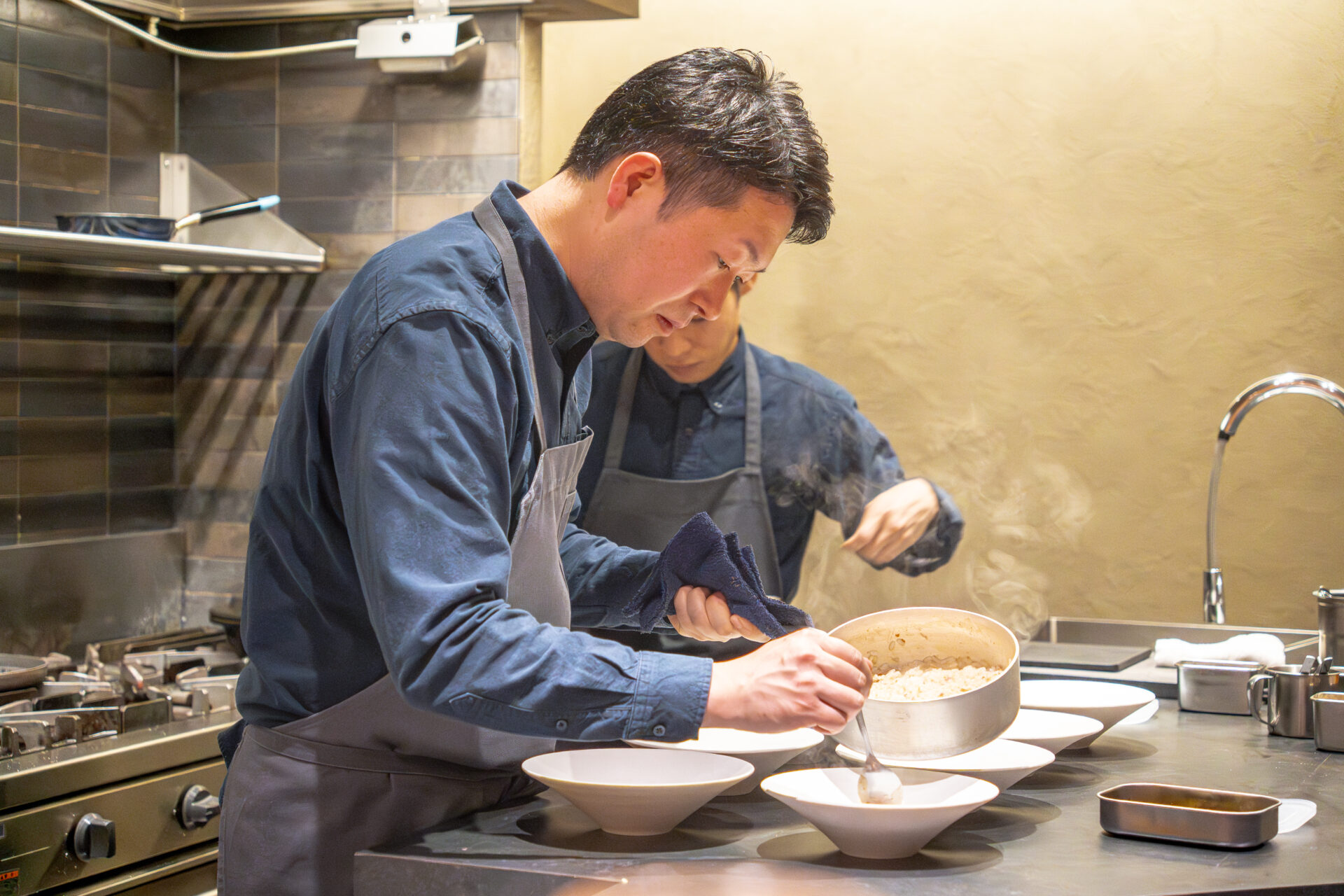
Restaurant Recognition
Since opening in November 2023, Lito has garnered significant attention. By 2025, it was selected for Tabelog’s Italian EAST Top 100 Restaurants, cementing its status as a rising force in Nagoya’s culinary scene.

Dining Prelude
Exterior & Entrance
Located on the second floor of a sleek building, Lito exudes quiet sophistication. The understated sign at the entrance subtly elevates expectations, hinting at the refined experience that awaits inside.
The entrance features textured walls and warm lighting, creating a serene and welcoming ambiance. The minimalist yet elegant design sets the tone for the dining experience that follows.
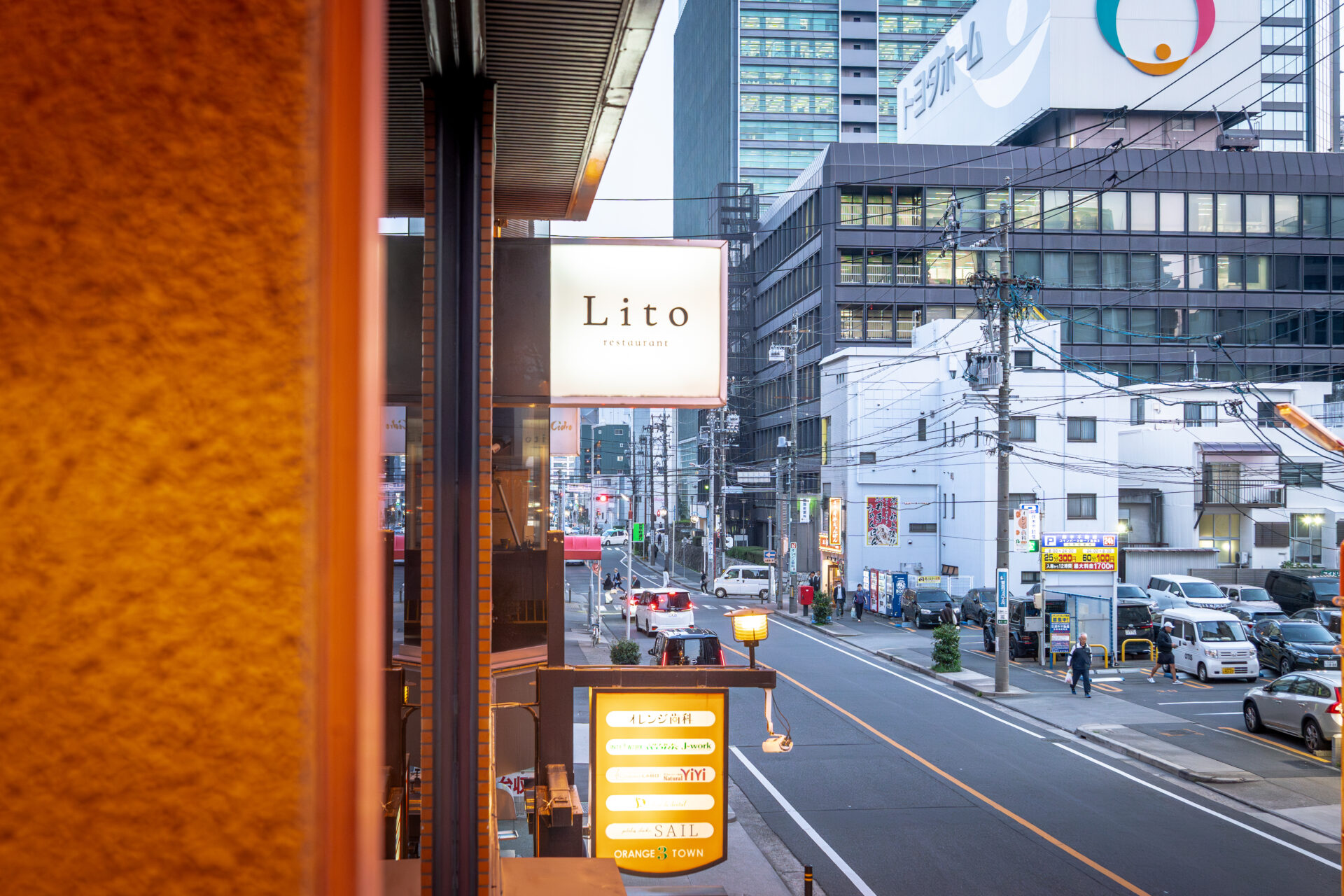
Dining Space
The interior is unified by warm wood tones and subdued colors, projecting an air of understated elegance.
With only 15 seats—5 at the counter and 10 at tables—the space offers intimacy and refinement. Counter seating provides a front-row view of the chef at work, where guests can fully engage their senses in the cooking process.
The tableware, created by artisans from around Japan, is chosen to harmonize beautifully with each dish, elevating the visual and sensory experience.
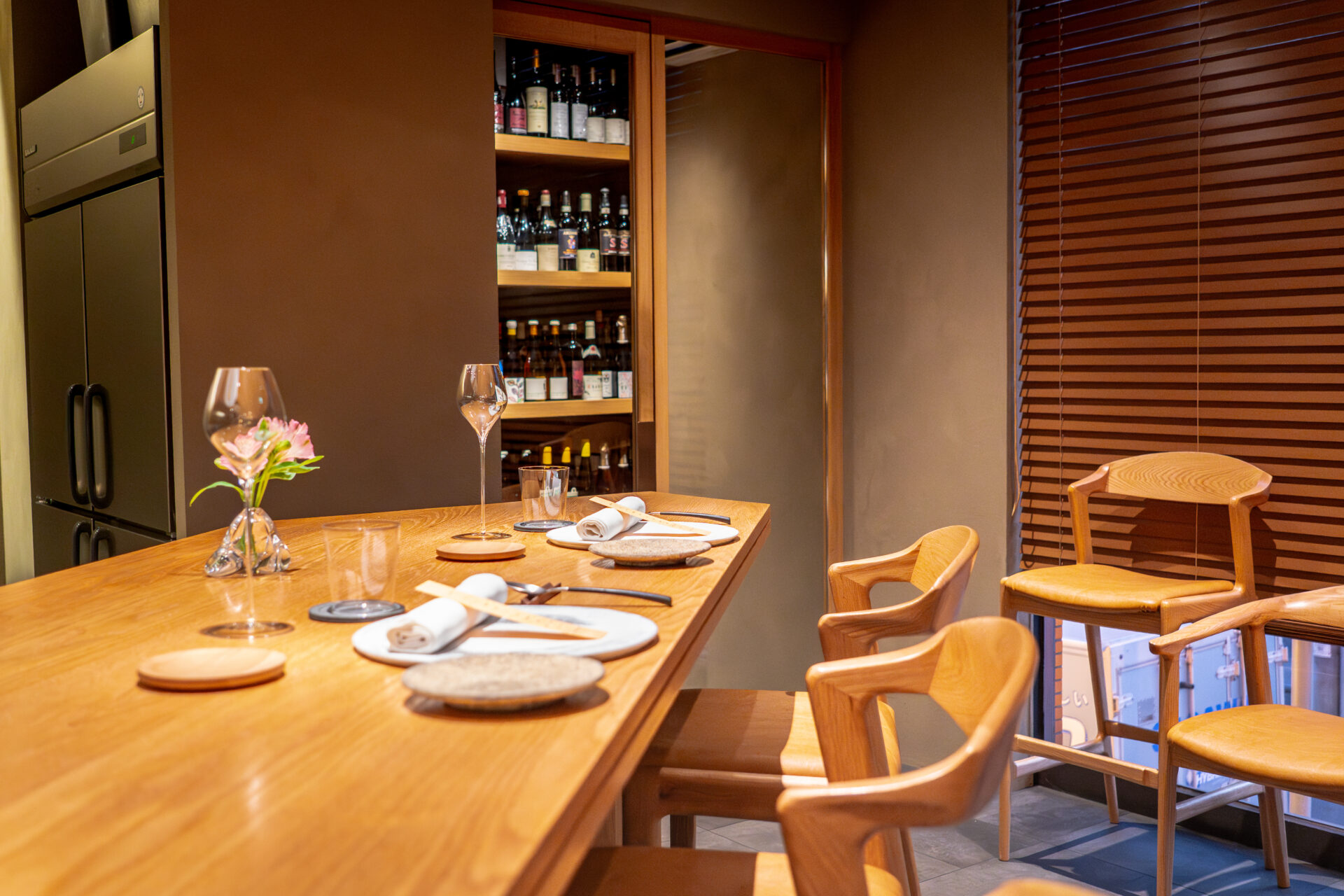
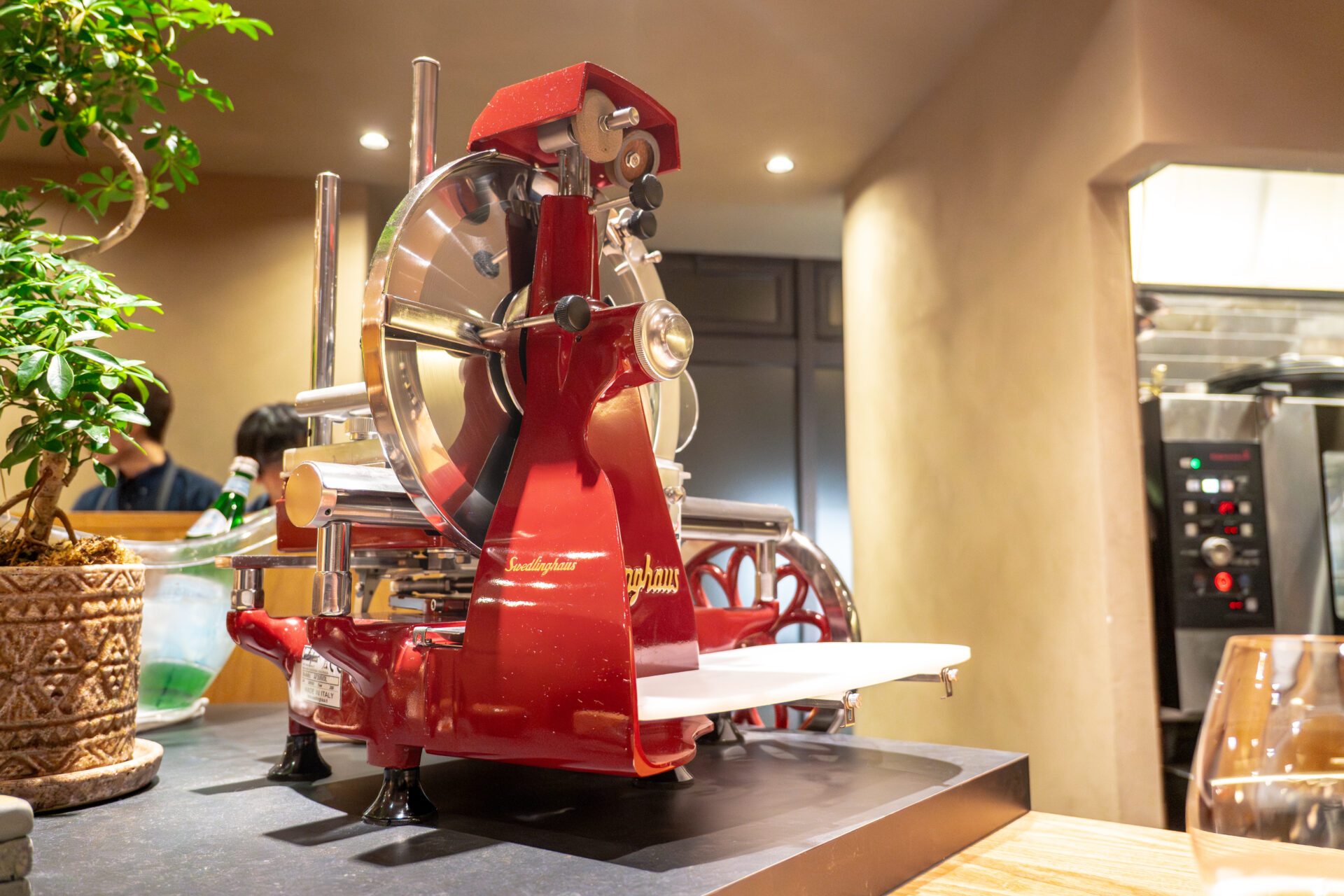
Menu Presentation
The menu at Lito embodies the restaurant’s quiet elegance and aesthetic sensibility.
Each menu is a long strip of paper, reminiscent of handmade washi, listing just a single word per line—Strawberry, Cōchin, Mishima Tai, Aichi Beef—highlighting only the ingredients. This minimalist approach invites guests to imagine each dish and enhances the surprise and delight of its eventual presentation.
The white napkin on the table, paired with unglazed ceramic plates, contributes to a serene and visually restrained setting. A discreetly placed note—Lito 2025 Spring—offers a gentle nod to the ever-changing seasons and the evolving nature of the menu.
Every detail is designed around the concepts of space and silence. Even before the first dish is served, the restaurant’s philosophy is already at work.
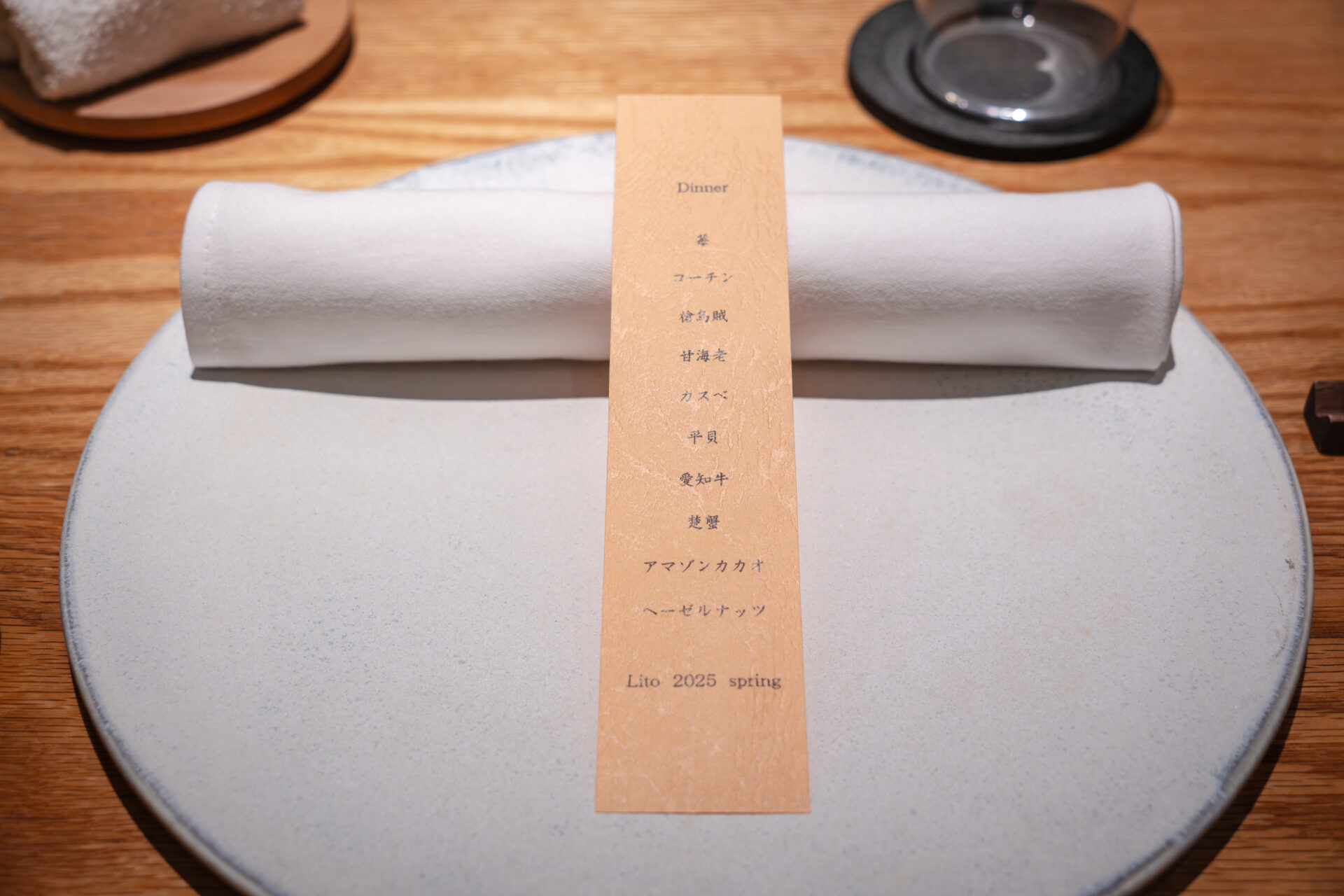
Starter Drink
The meal begins with COEDO Shiro, a Weizen-style beer.
With its mellow sweetness and subtle banana aroma characteristic of the style, the beer’s fine foam is enhanced by being served in a wine glass. This brings out its fragrance even more, making it a perfect prelude to the dining experience.
As the gentle scent of yeast wafts across Lito’s elegant counter, the story begins quietly—one sip at a time.
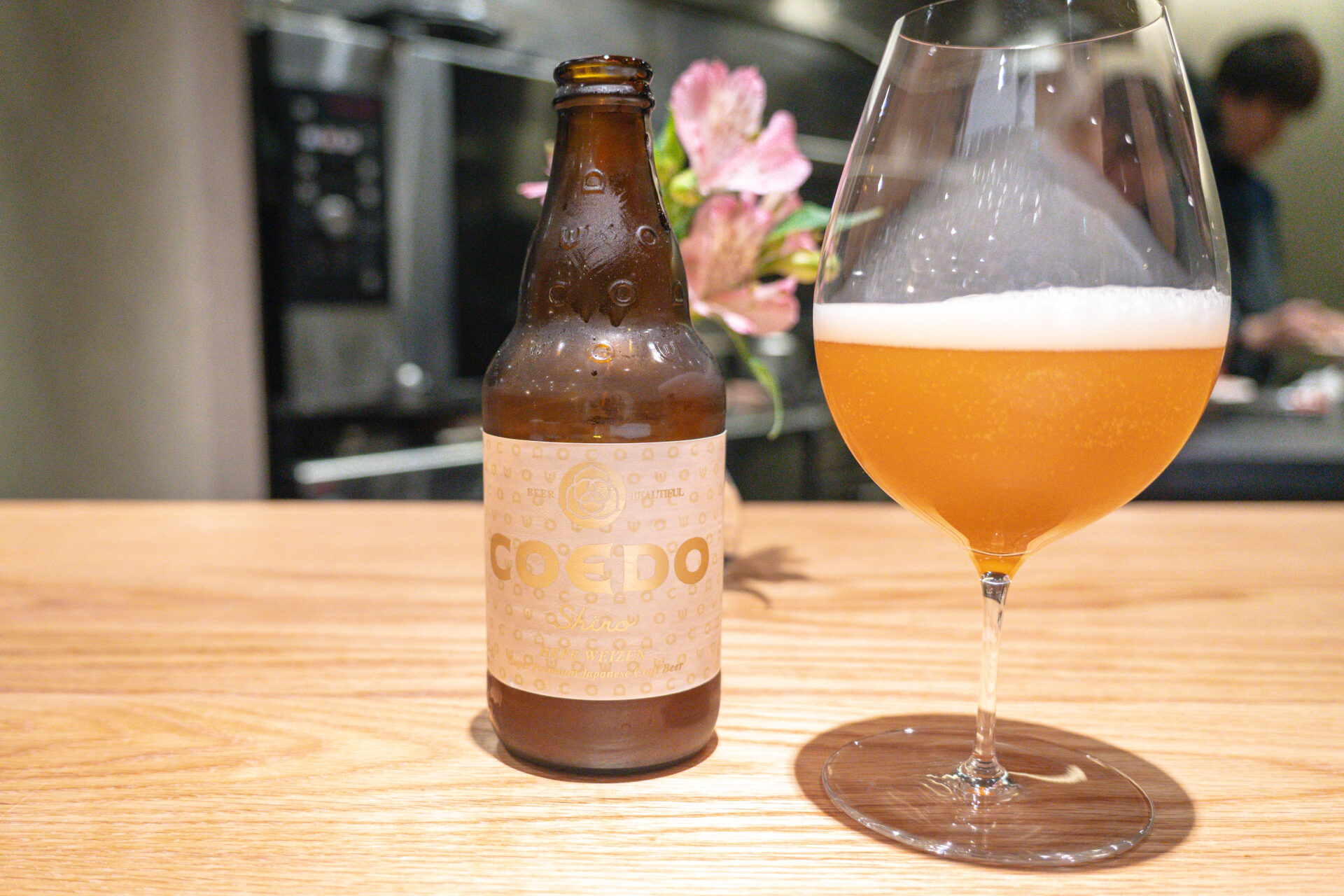
Dishes Tasted
Strawberry
The course begins with a dish featuring “Yumenoka,” a strawberry variety from Aichi Prefecture. At the base lies semi-dried strawberry, topped with a hidden layer of fromage blanc that offers a mellow acidity. Fresh strawberries are arranged around the plate, and the entire composition is gently wrapped in a fermented strawberry sauce.
Visually light, yet flavorfully complex—this opening dish left a strong impression.
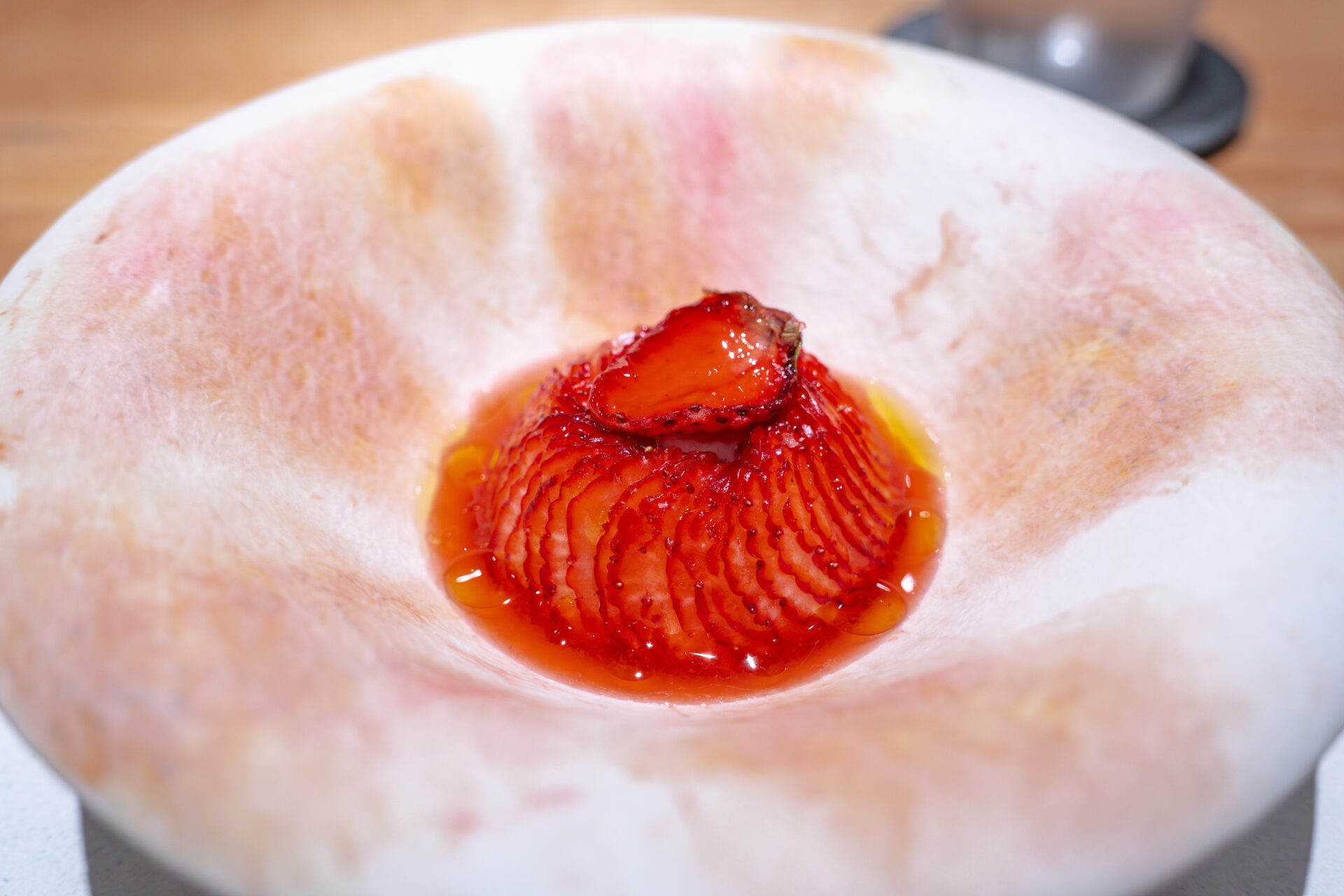
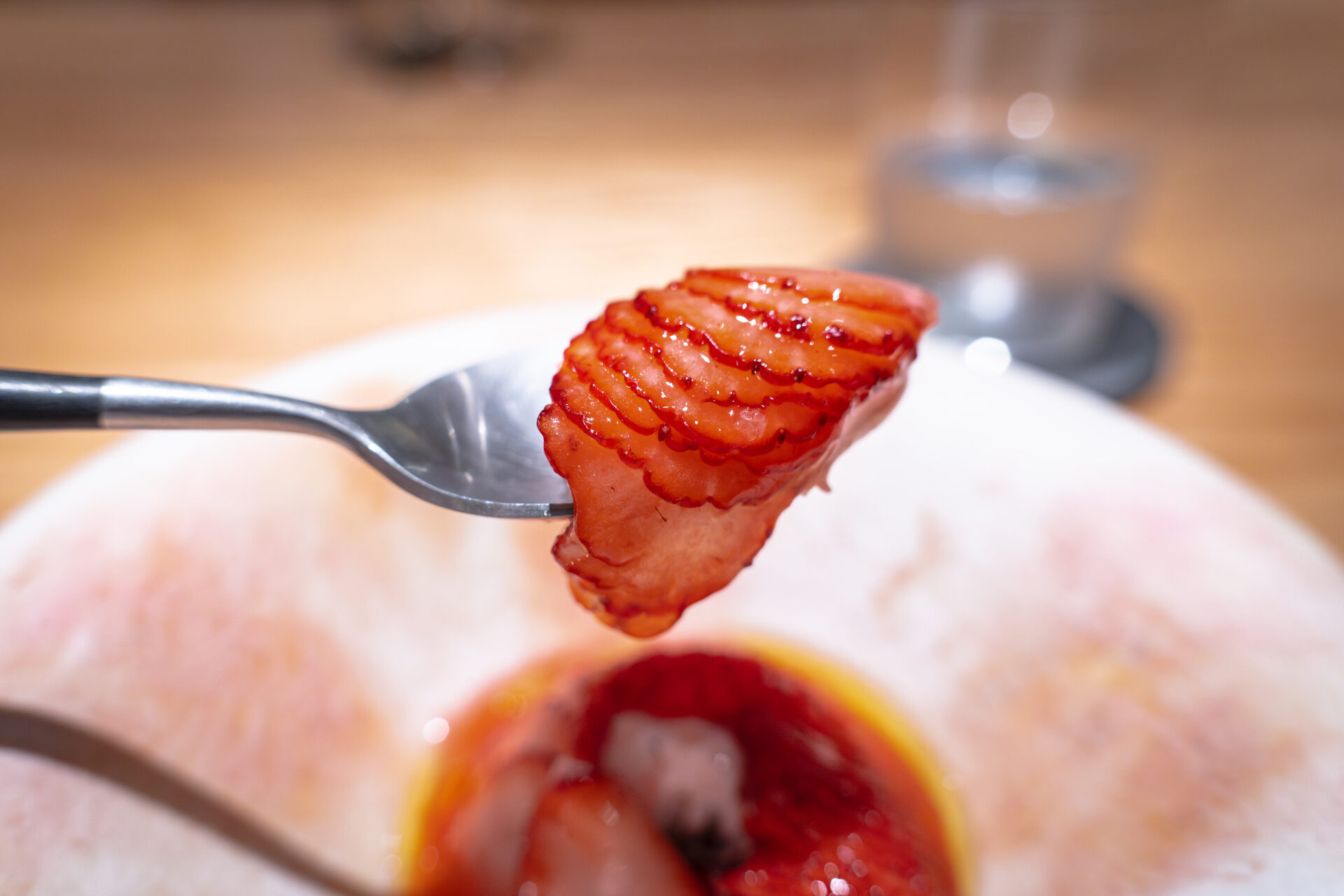
Cōchin
Next came a ravioli filled with Nagoya Cochin chicken. Inside, finely chopped fermented napa cabbage added texture and subtle acidity to the savory filling.
The soup was based on a broth made by carefully extracting flavor from prosciutto over two hours. Accents included bamboo shoots from Kuwana, kinome leaves, and kinome oil, which added a fresh aromatic touch.
Mellow and delicate, yet clearly defined in flavor—this dish beautifully layered fragrance, umami, and acidity.
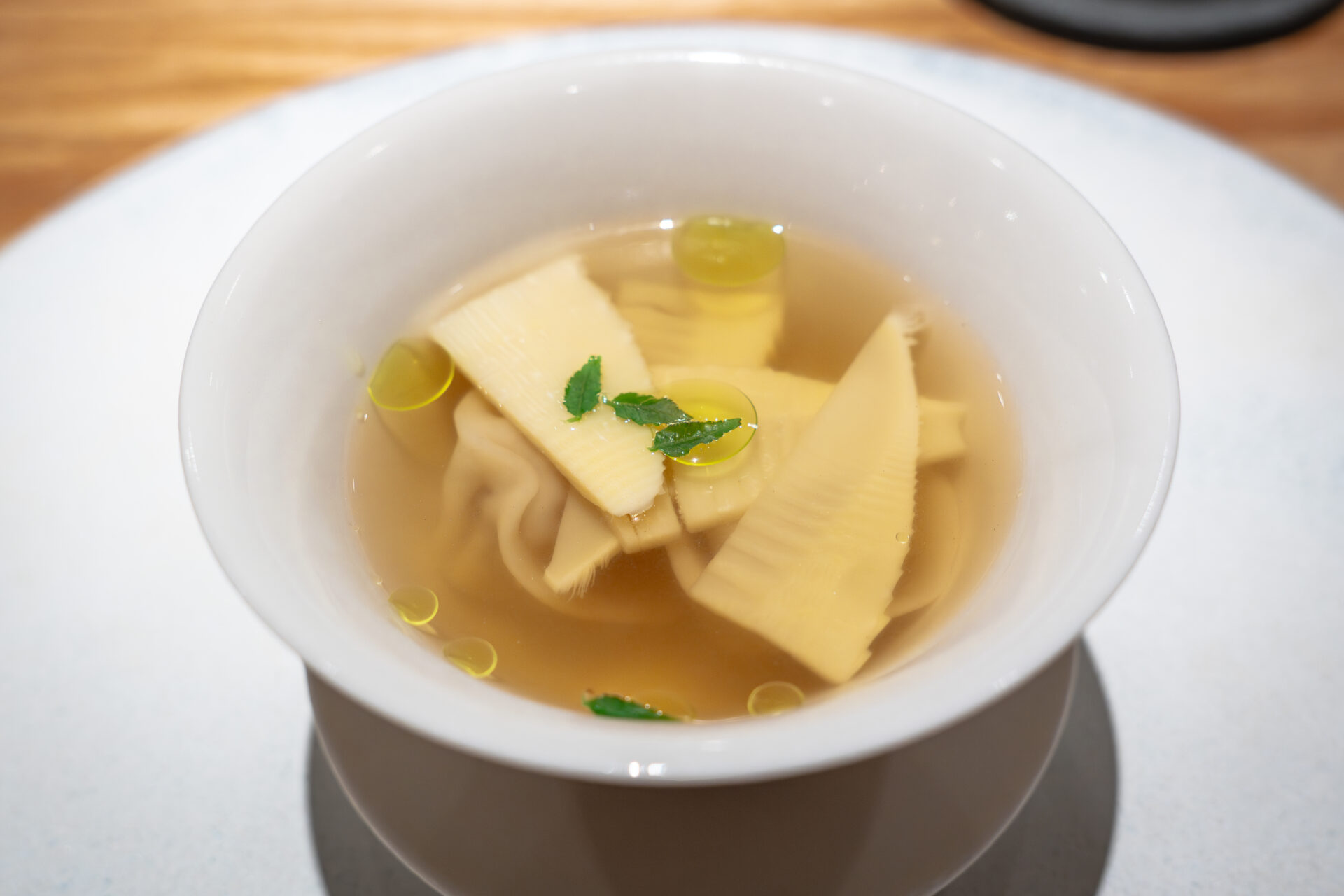
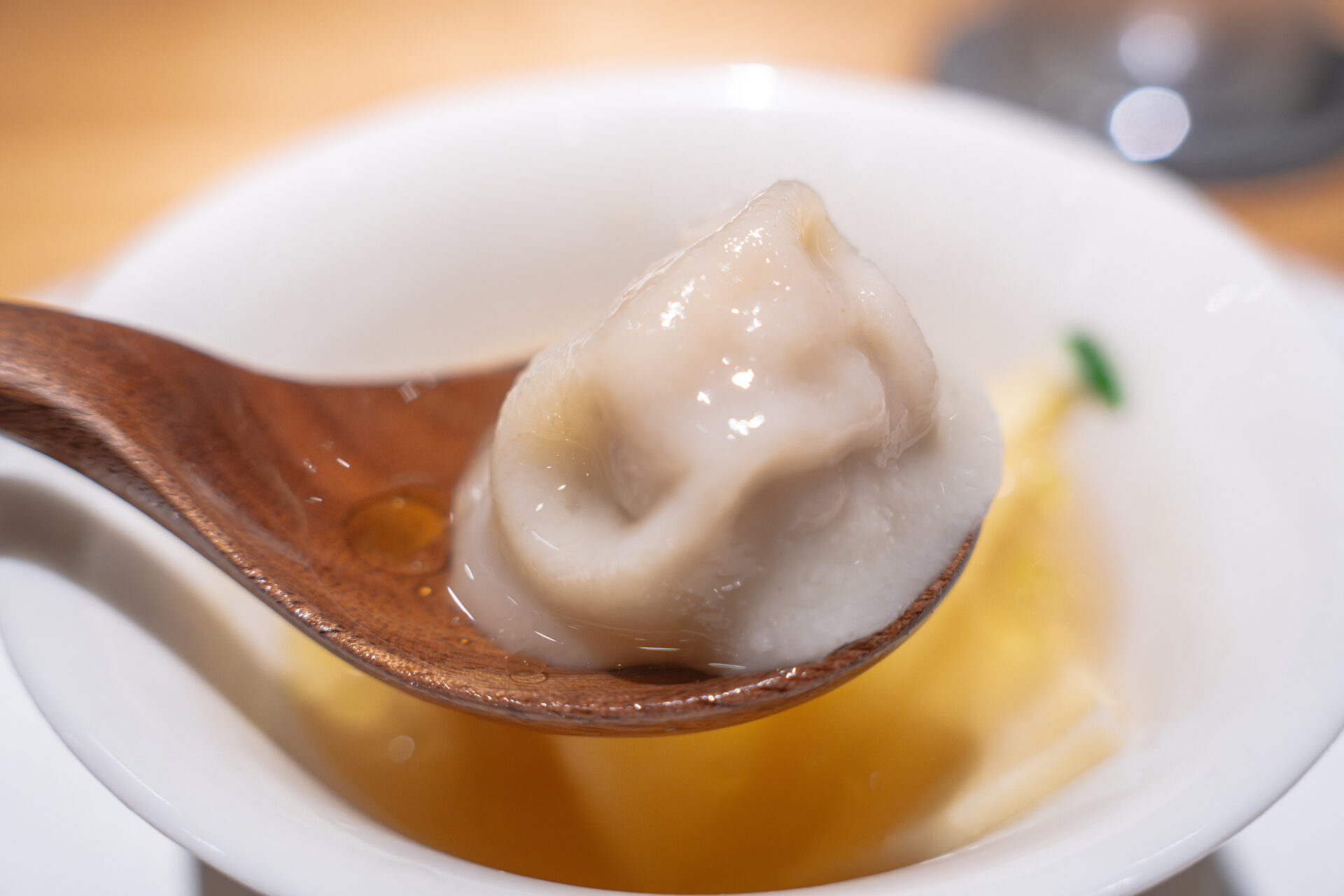
Just as the lingering taste of the ravioli began to fade, a glass of “BRASSHOPPER 2023” from COCO FARM & WINERY (Tochigi) was poured. As its grassland-inspired label suggests, it offered natural notes of herbs, citrus, and a hint of reductive aroma. The wine gently reset the palate while connecting to the next dish: grilled spear squid.
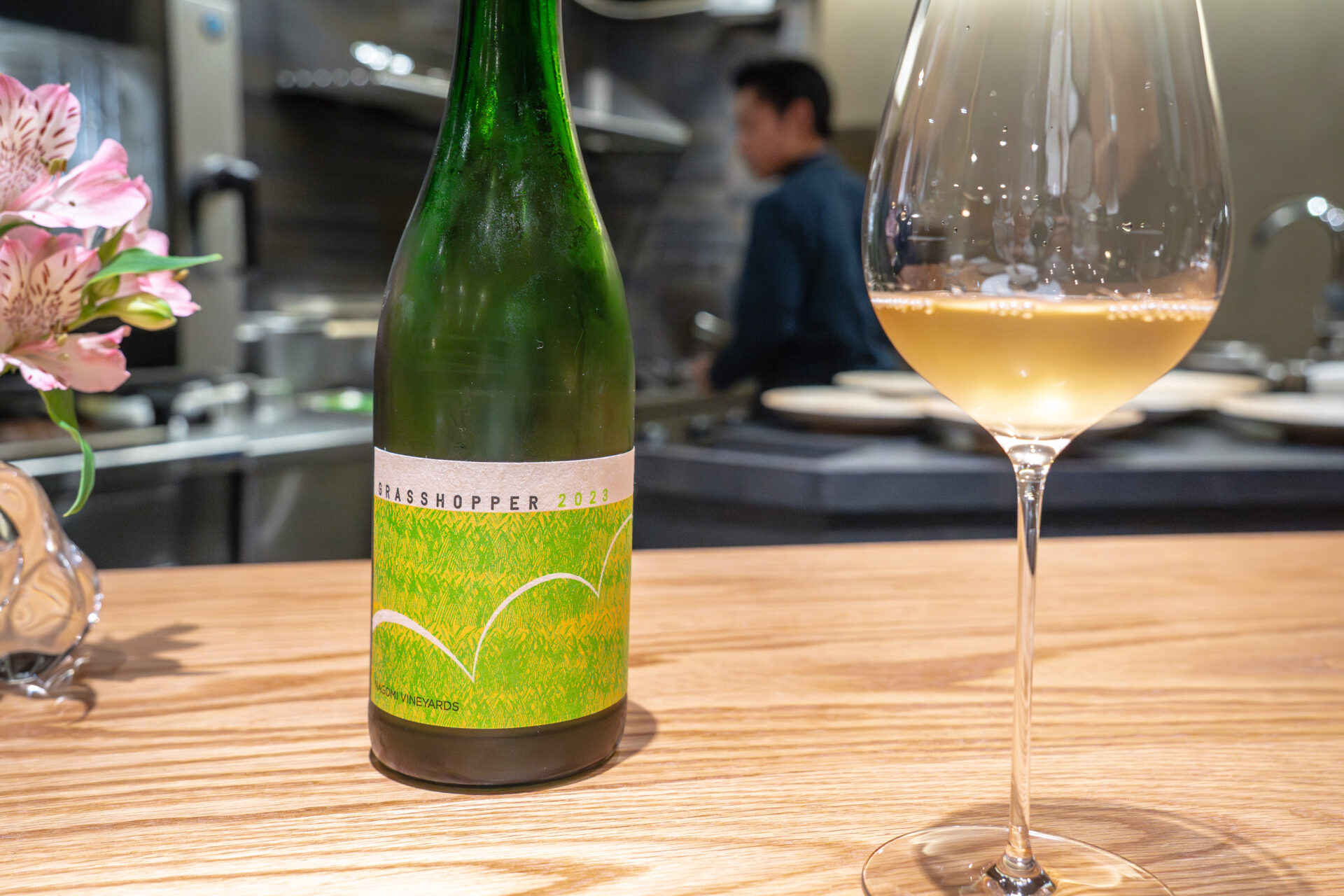
Spear Squid
Grilled over a hot plate to bring out its aroma, the spear squid was served with two preparations of rapini—stewed and sautéed—layering green fragrance and slight bitterness. The yolk vinegar-based sauce echoed the role of a mustard mayo, gently bringing the dish together.
Chopped fermented kumquat added a citrusy tang as an accent, while micro dill on top offered a hint of spring freshness.
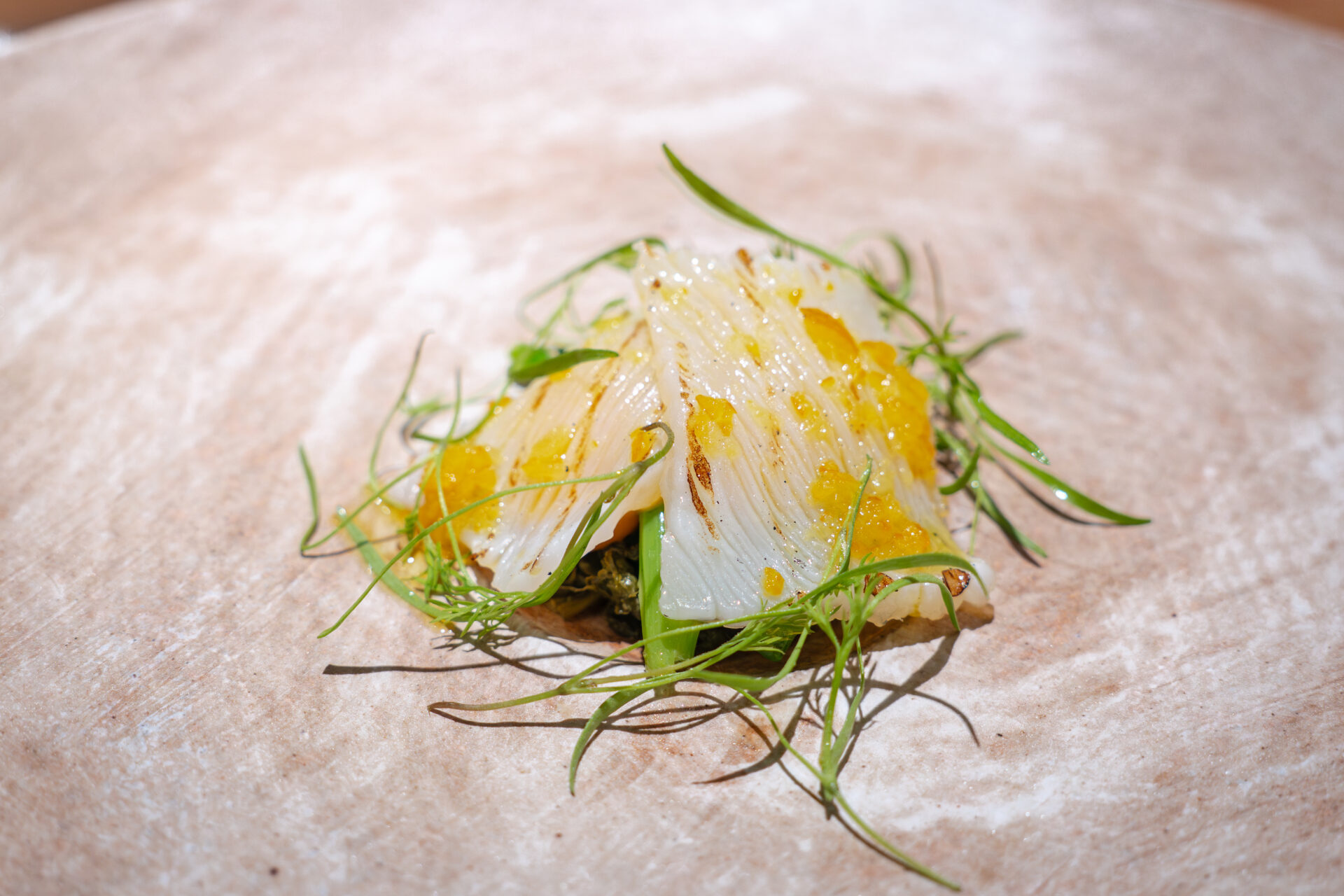
Sweet Shrimp
A memorable dish came in the form of a cold course that reimagined sōmen noodles as Italian pasta. The chewy noodles, sourced from Shōdoshima in Kagawa Prefecture, were paired with sweet shrimp marinated in kombu oil and buds of hibiscus, which offered a touch of acidity.
A spoonful of fermented tomato sauce—also featured in Chef Kubota’s signature salmon dish at Naz in Karuizawa—completed the dish. While composed with Japanese ingredients, the structure and flavor were unmistakably Italian. A quintessential Lito creation, blending restraint and creativity.
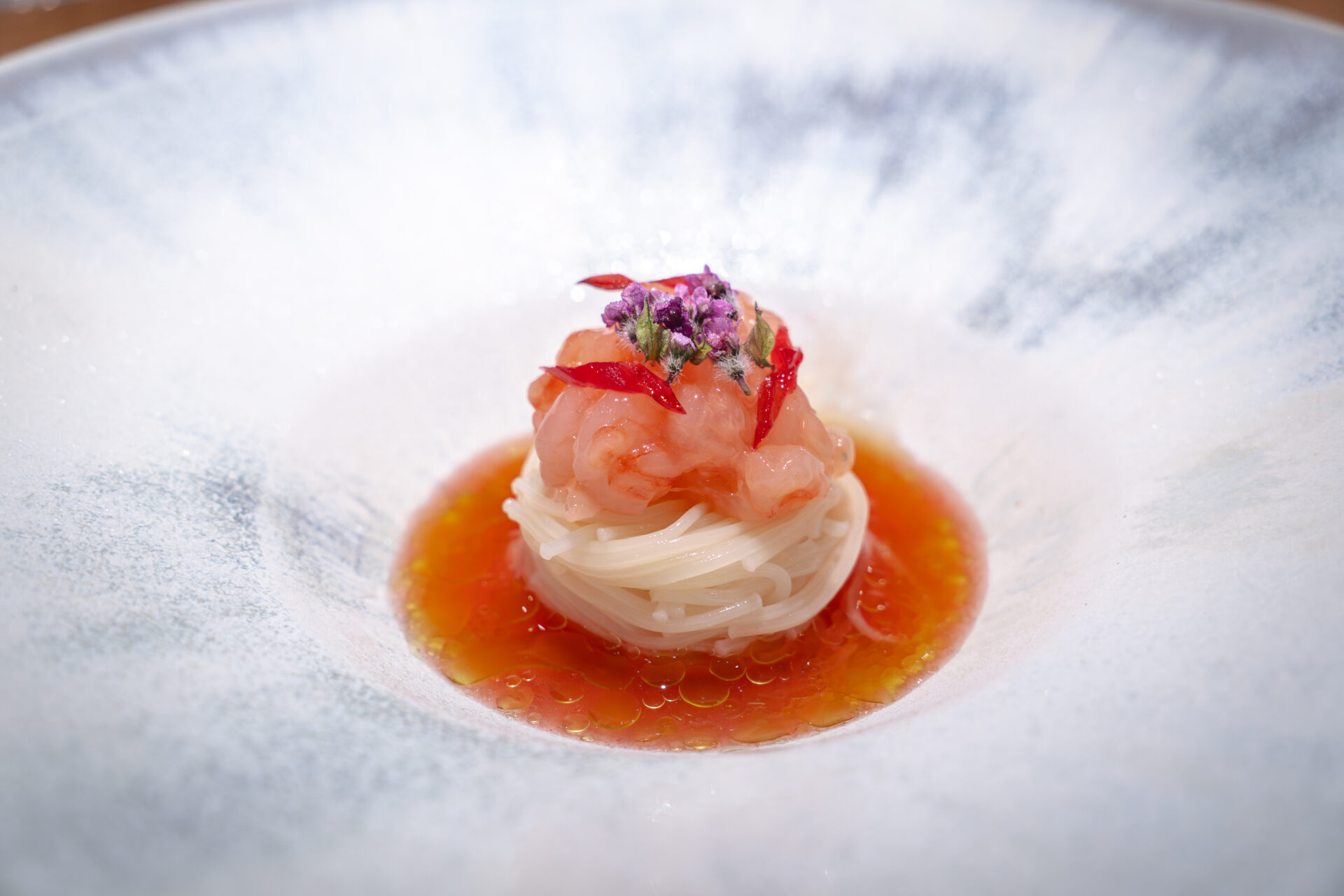
To pair with the next course—a ray wing fritter—a white wine was served:
PASSO GIGANTE “Loureiro” from Portugal’s Vinho Verde region.
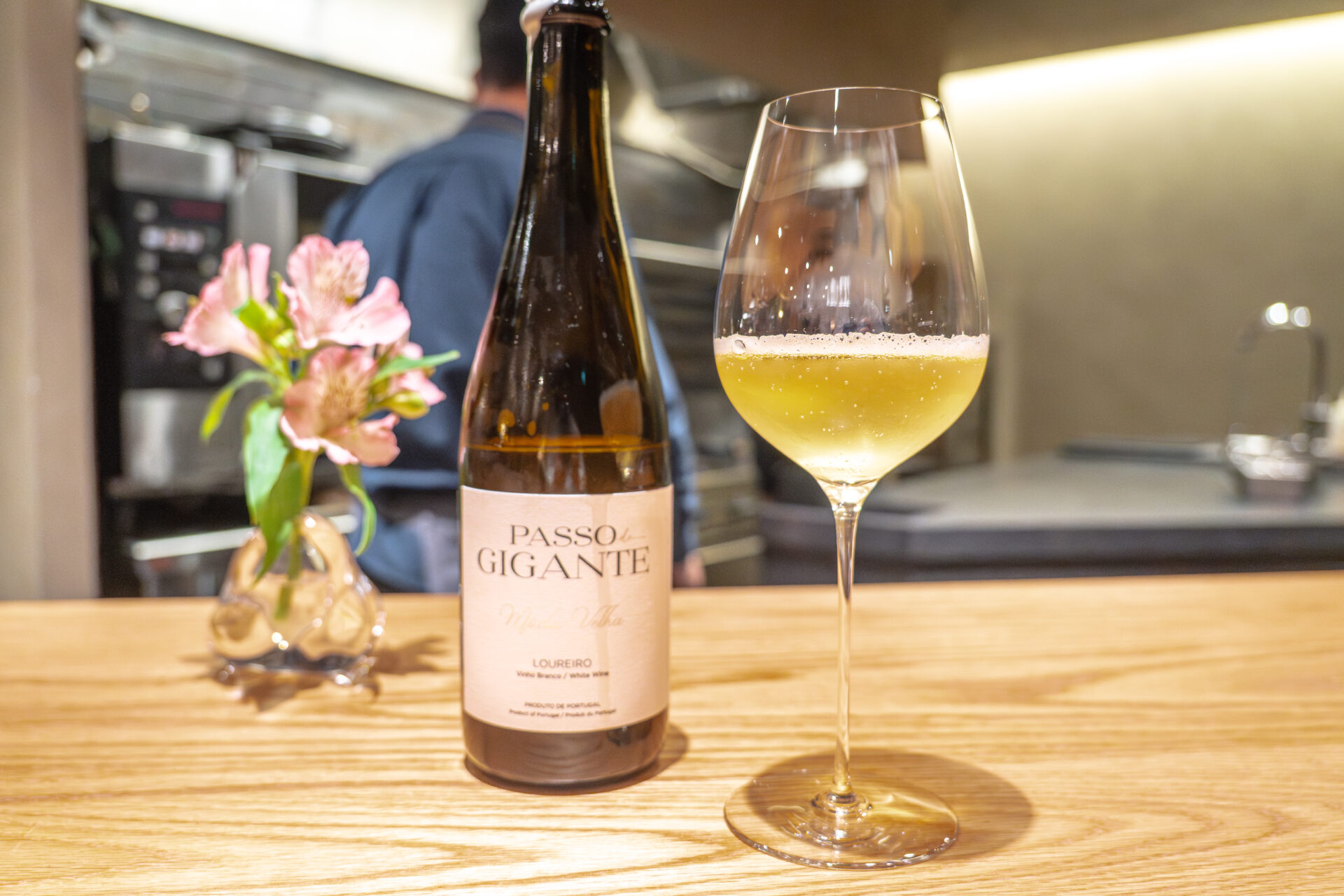
Kasube (Ray Wing)
This course featured a fritter made from the wing of kasube (ray), deep-fried at high heat (~250°C) for a crisp exterior and moist interior.
Topped with a tartar-style sauce made from fermented cabbage and mustard, and accented with fresh amanatsu citrus for brightness and acidity. A side of sautéed cabbage added a gentle touch of spring aroma.
To finish, a powder of fermented cabbage—fermented, then condensed and dried—was sprinkled over the dish, enhancing umami, bitterness, and fragrance. A deeply memorable dish.
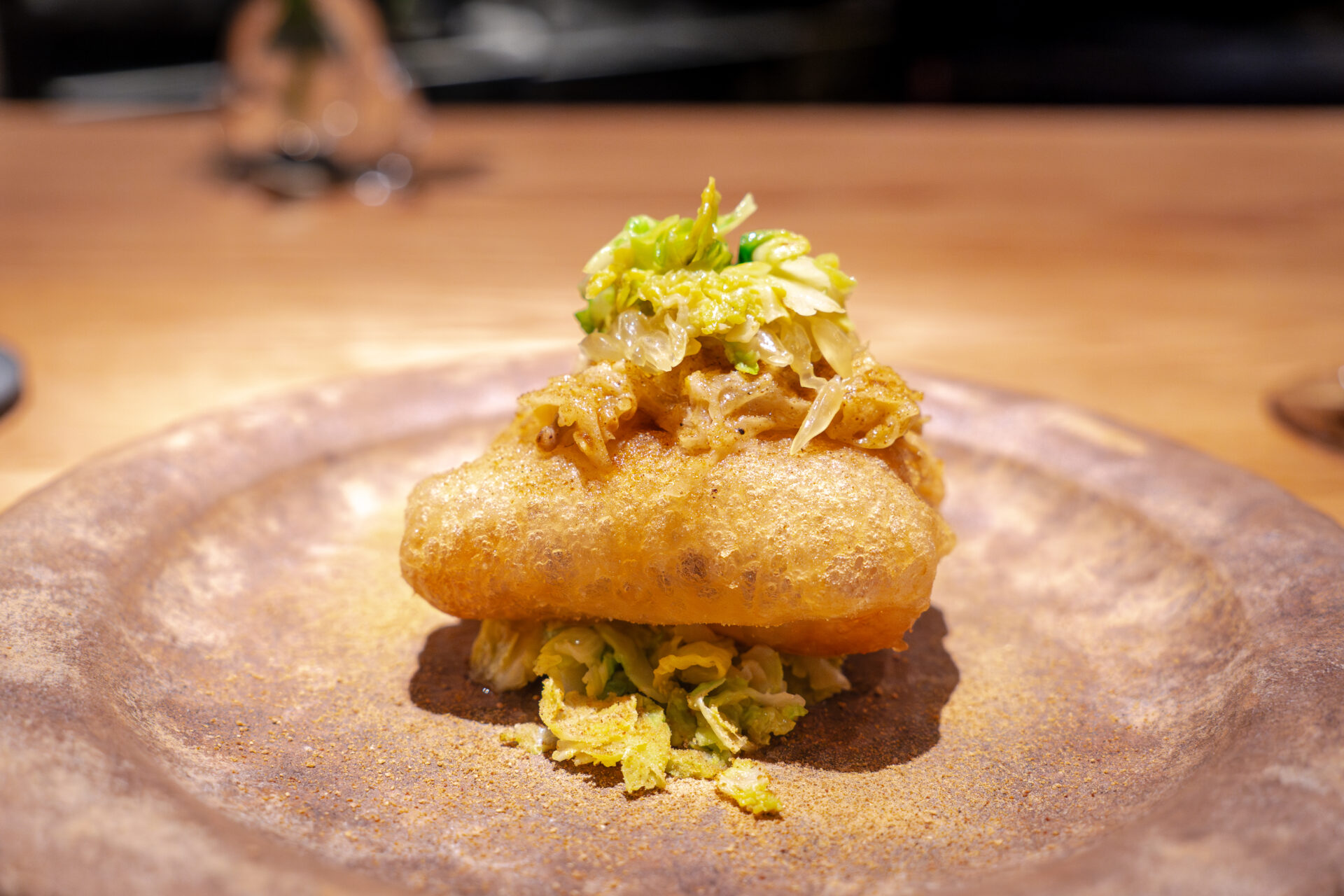
Pen Shell (Tairagai)
A risotto made with tairagai (pen shell) from Mikawa Bay.
The rice, a large-grain variety from Hida called “Ryū no Hitomi,” retained a plump texture while fully absorbing the flavors. Hidden within were sun-dried tomatoes, adding concentrated sweetness and acidity.
The dish was finished with salted cherry blossoms and leaves, imparting a gentle floral hint of spring. A dish that layered Japanese elements in a quiet celebration of the season.
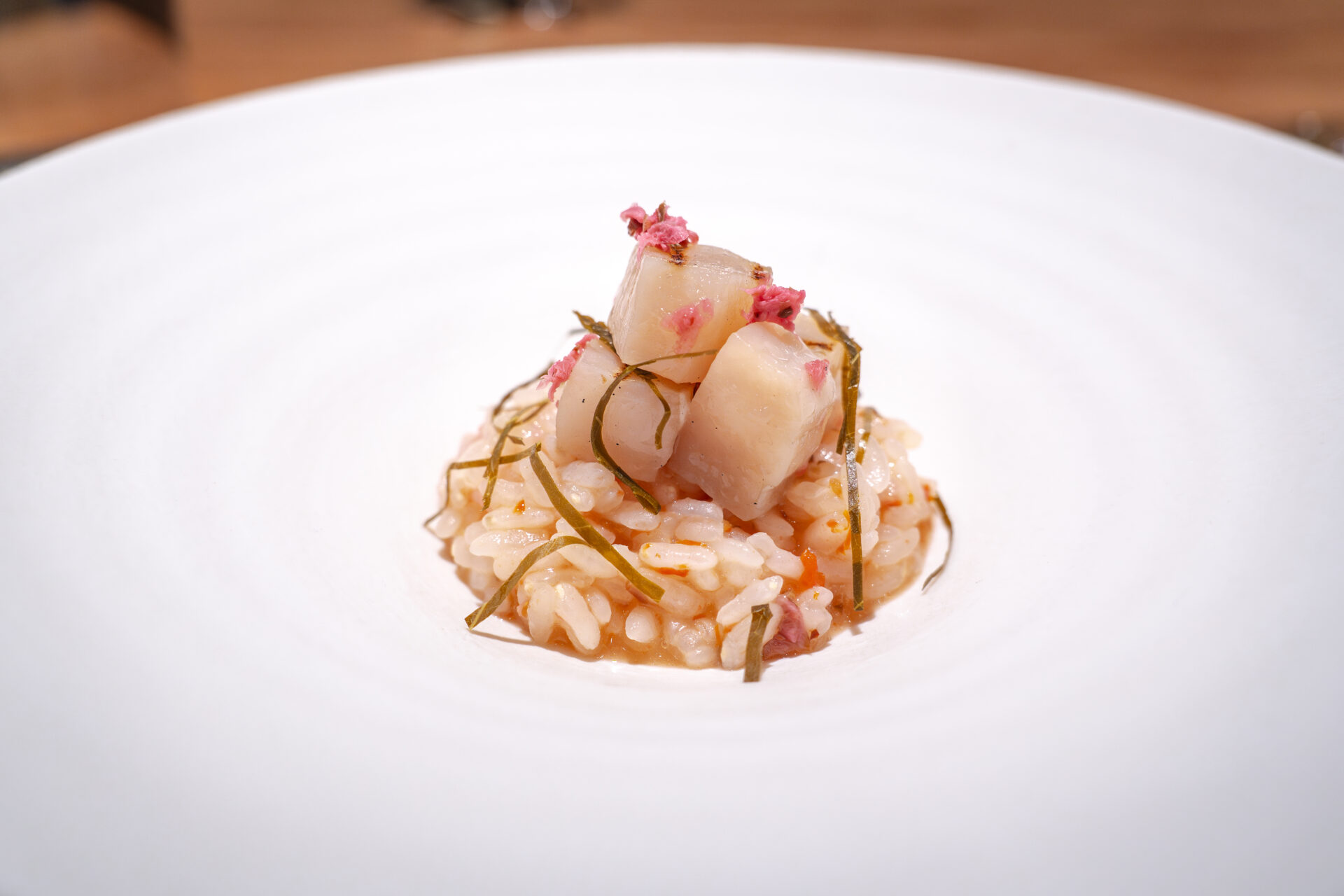
At one point during the meal, a casual question about fermentation led to an insightful moment—Chef Kubota brought out fermenting tomatoes and cabbage to show across the counter. It was clear that the fermentation techniques he learned at Naz form the backbone of the cuisine at Lito.
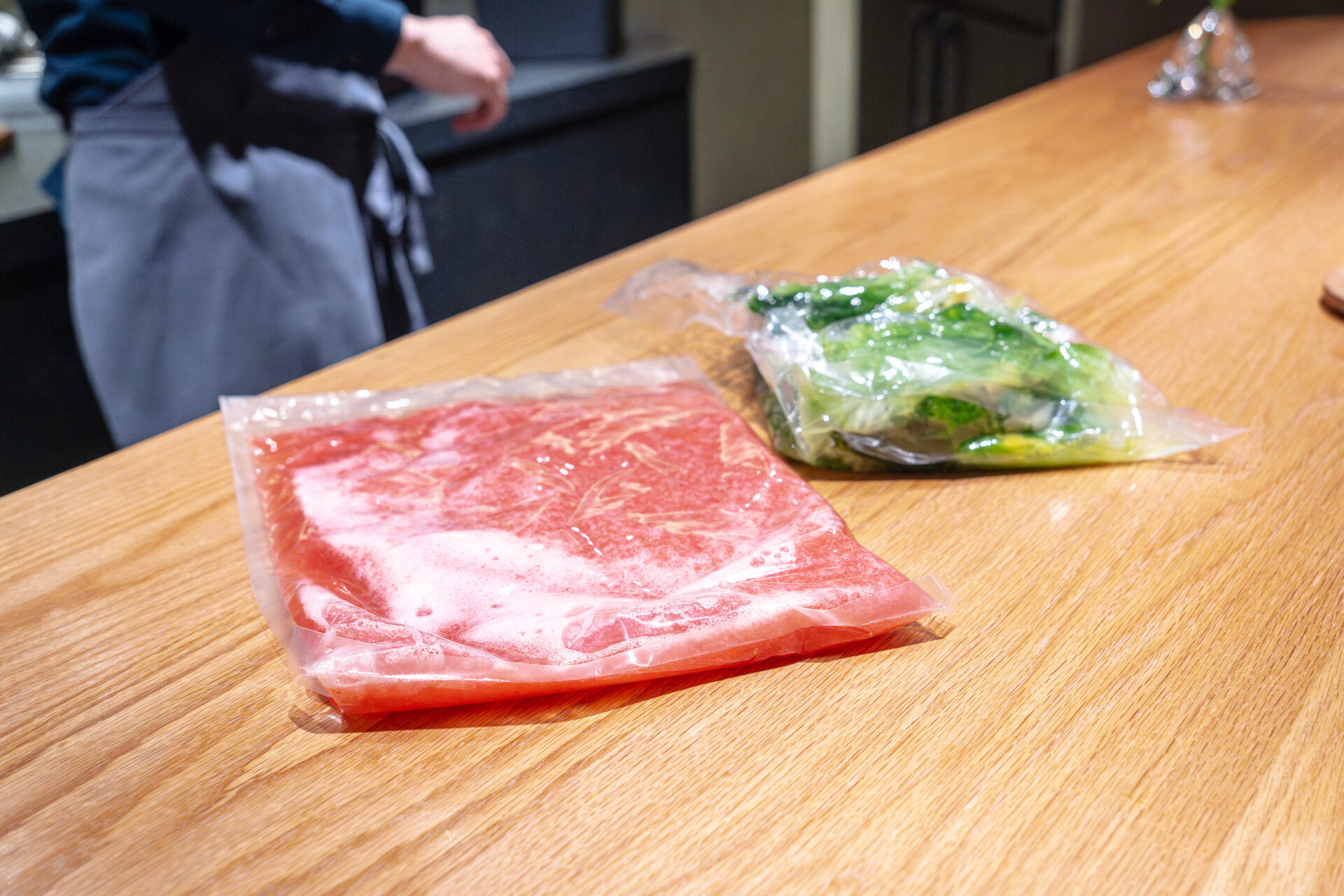
For the main course, a red wine was served:
Poderi Sanguineto I e II — Vino Nobile di Montepulciano Riserva 2019 (Tuscany)
An elegant pairing that complemented the depth and balance of the dishes to follow.
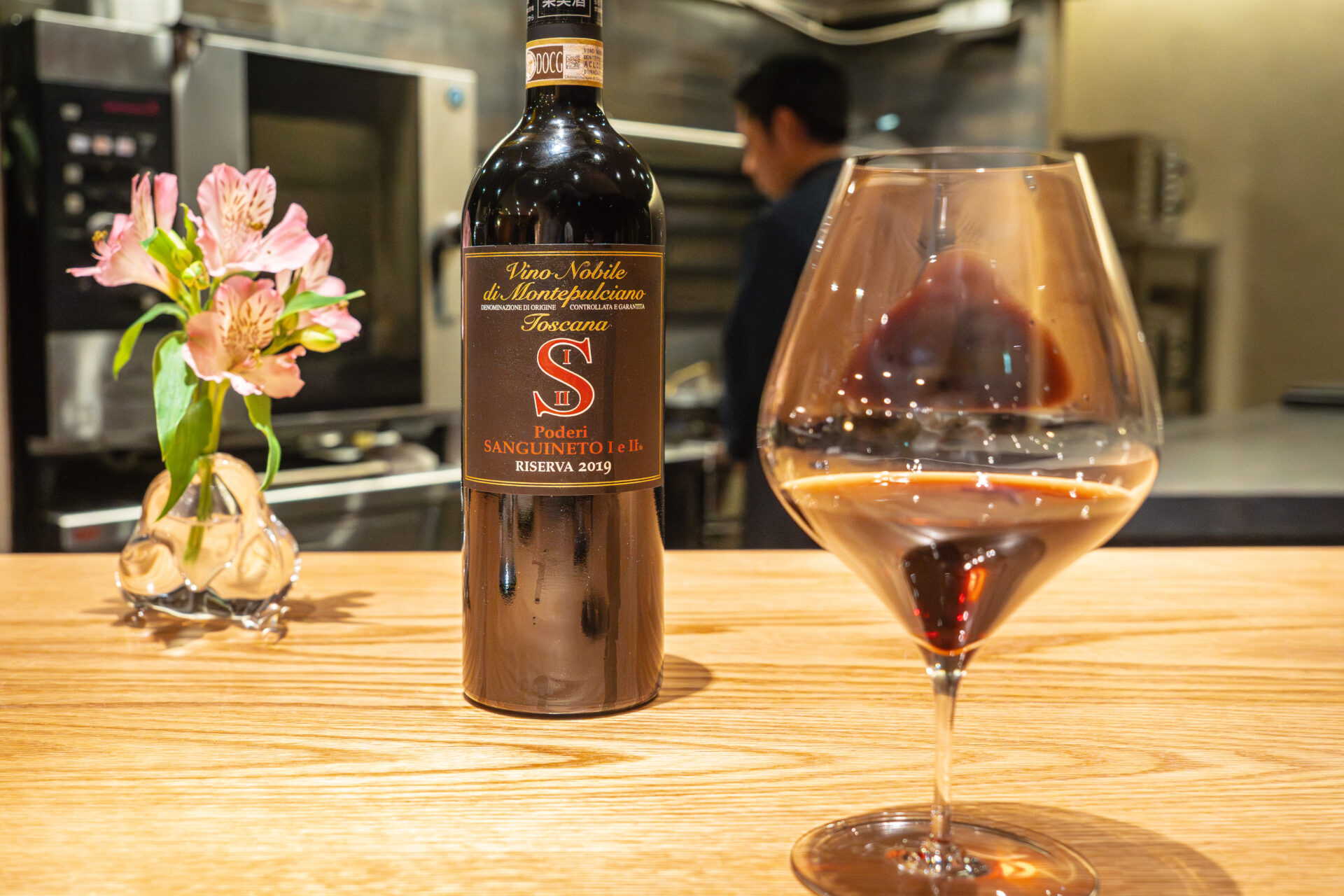
Aichi Beef
The main dish featured a fillet of Aichi beef—tender and perfectly cooked to a moist, juicy doneness that impressed from the first bite.
The surface was brushed with layers of black garlic and fermented blueberries before roasting, then gently smoked with straw for a subtle aroma. The result: a beautiful combination of char and faint fruitiness that lingered on the palate.
Beneath the beef lay sautéed shungiku (chrysanthemum greens) in browned butter, and a purée of potato blended with fukinoto (butterbur buds), striking a refined balance between bitterness and sweetness.
The finishing touch was a rich, concentrated sauce made by slowly extracting flavor from beef bones and tendons—deep, umami-laden, and perfectly matched to the meat.
Each component—the beef, the aromatic garnishes, and the sauce—stood out on its own, yet came together in a quietly powerful harmony.
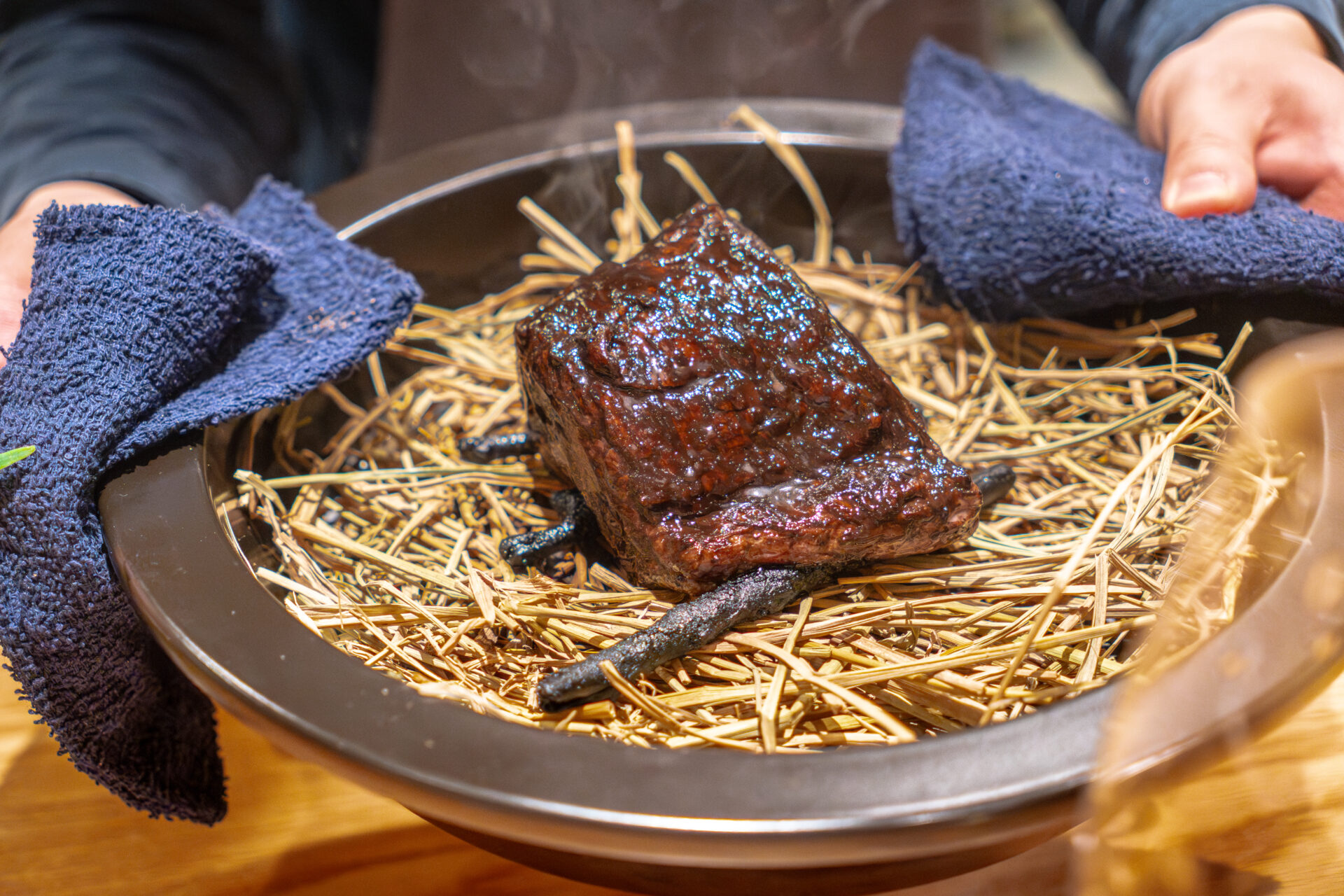
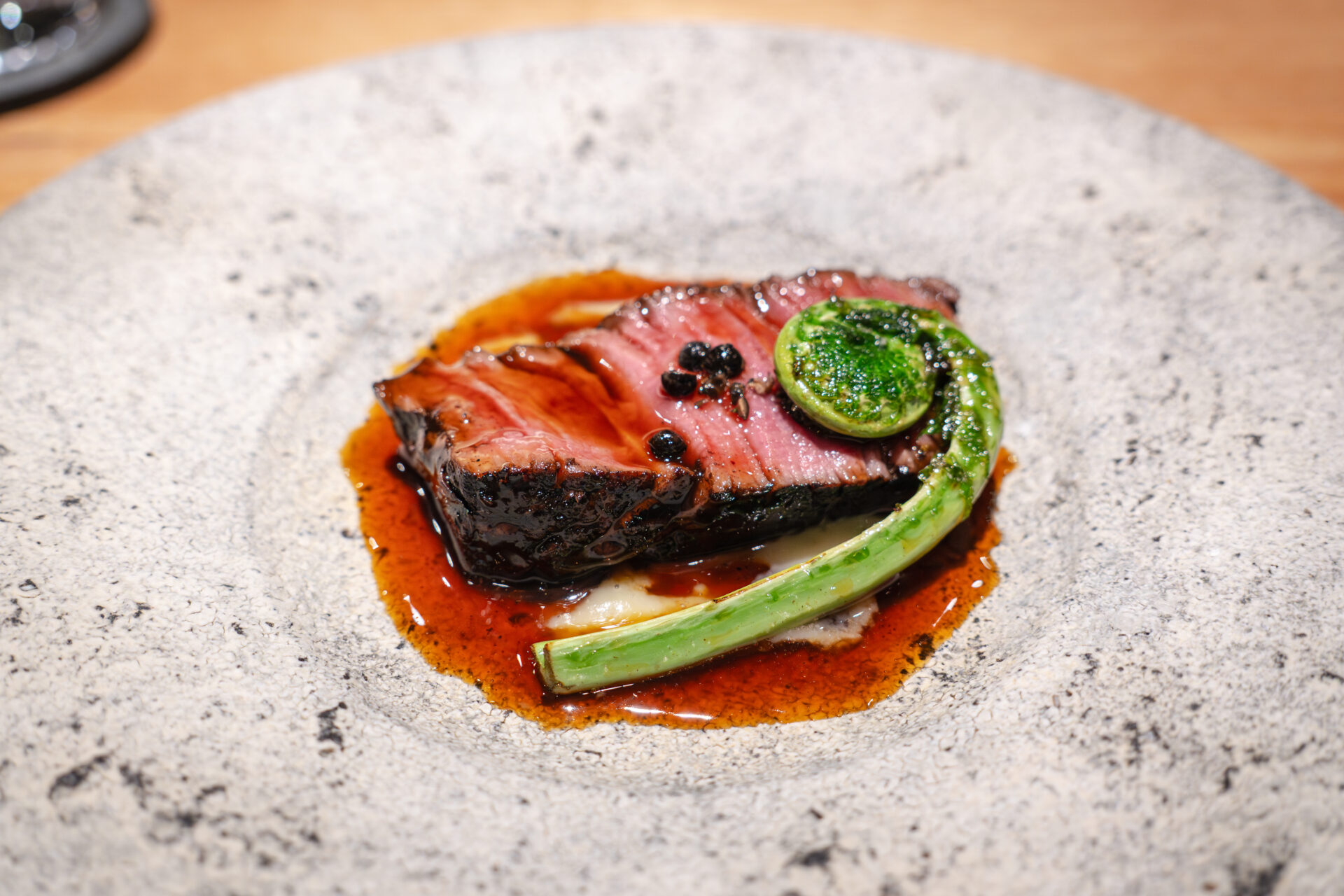
A house-made high-hydration bread accompanied the dish. With more water than flour in its composition, the result was a chewy, moist texture that made it ideal for soaking up the sauce. Far from being just a side, this bread was clearly a labor of love—baked fresh daily and perfected to a high standard.
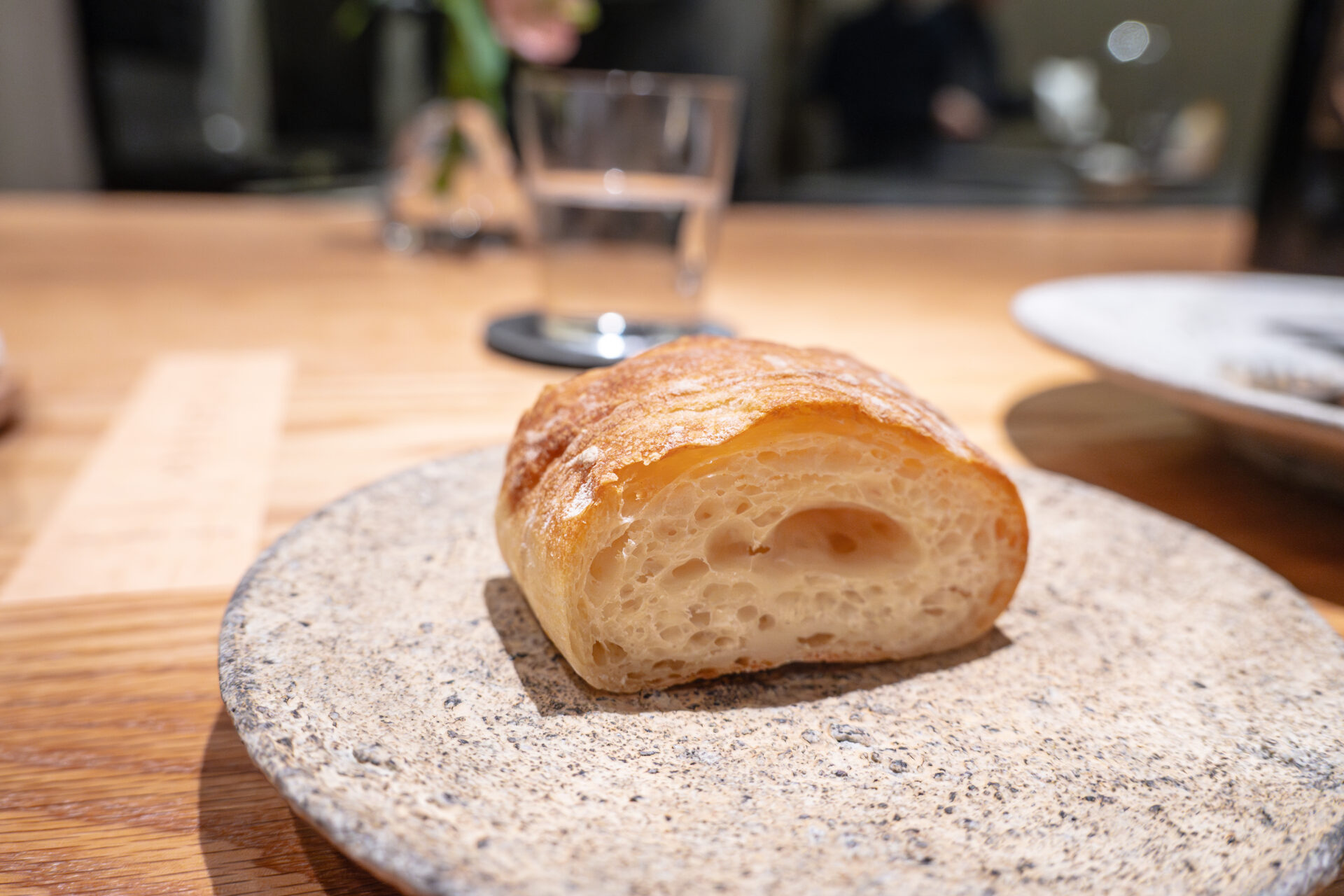
Snow Crab (Zuwai-gani)
Next came fresh-made tagliolini, kneaded with a slightly higher ratio of egg white for a uniquely chewy texture.
It was paired with snow crab and fermented lettuce, then topped with a sauce of crab vinegar and egg—a flavor profile reminiscent of kani-tama (Japanese-style crab omelet), but reinterpreted in elegant Italian form.
A dish that cleverly embedded Japanese nostalgia into Italian technique, offering a surprising yet familiar delight.
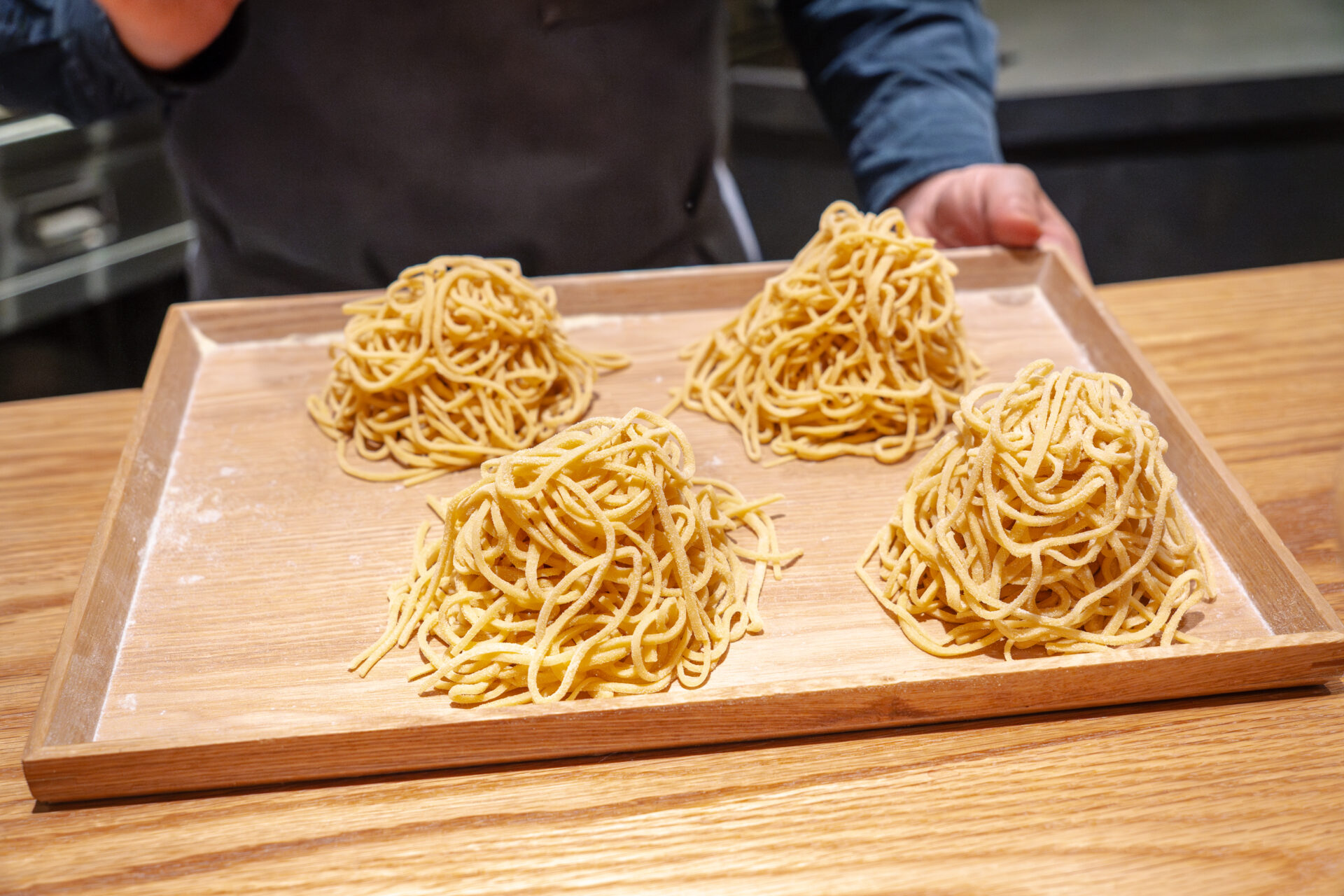
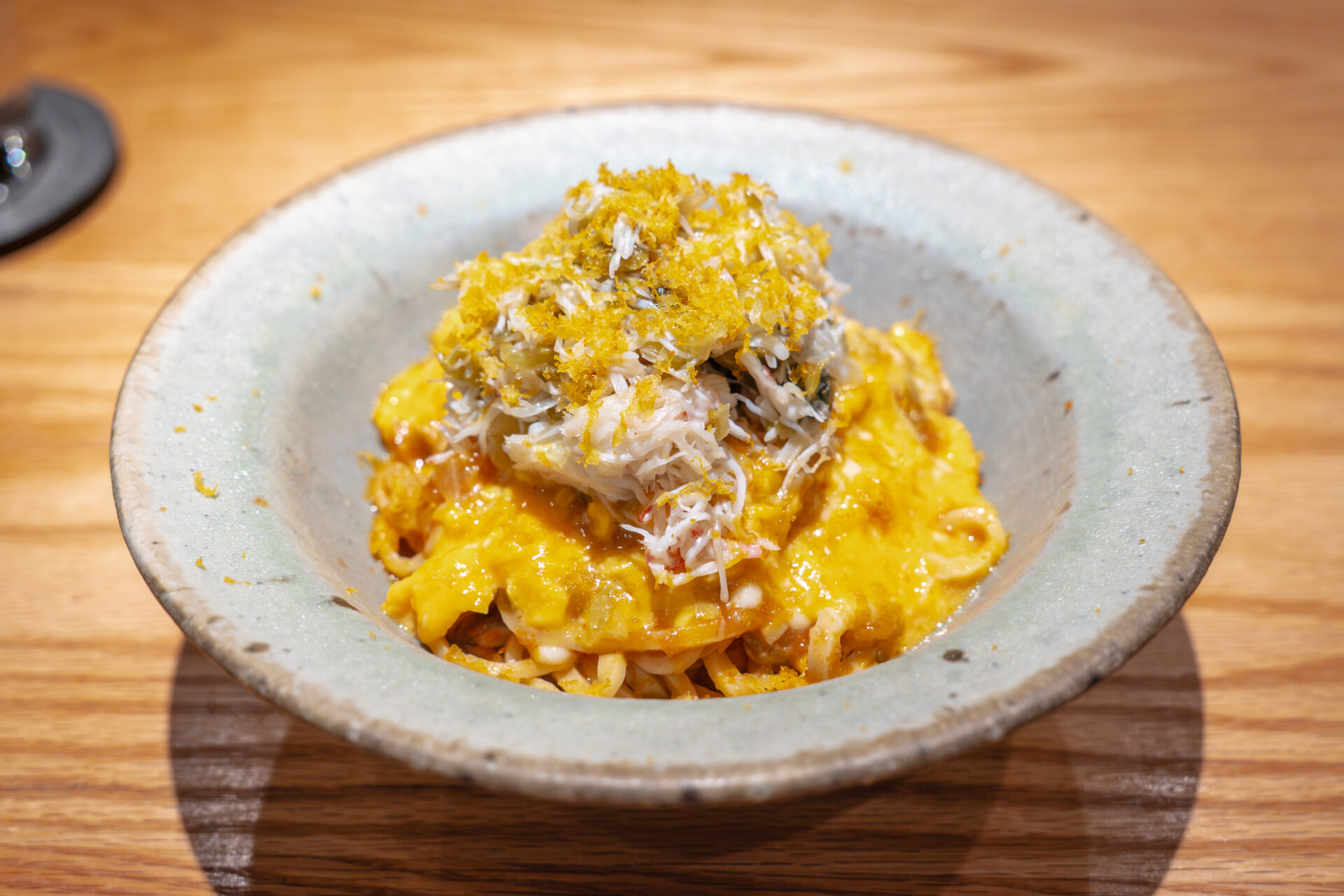
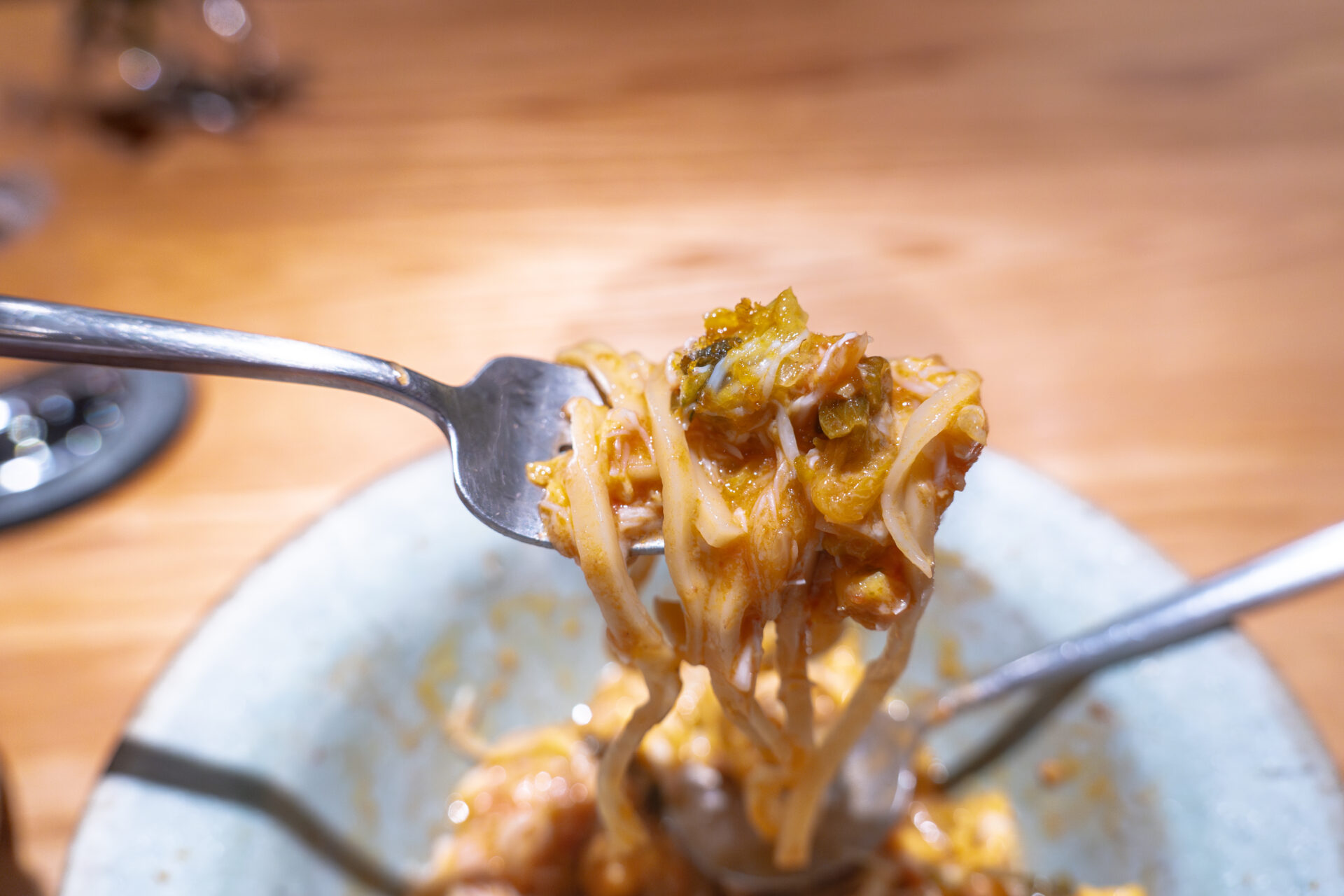
Dessert & Finale
Amazon Cacao
For dessert, a striking presentation: a large block of Amazon cacao was brought to the table and shaved directly over the dish, releasing its intoxicating aroma.
The rich, fragrant chocolate was paired with ice cream made from concentrated milk, a raspberry sauce bursting with acidity, and a delicate sugar tuile set using only fruit sugar. Cacao nibs were scattered over the top, adding texture and a lasting bittersweet finish.
The interplay of aroma, temperature, acidity, and sweetness made for a memorable finale—one that captured both the raw vitality and subtle elegance of the Amazon.
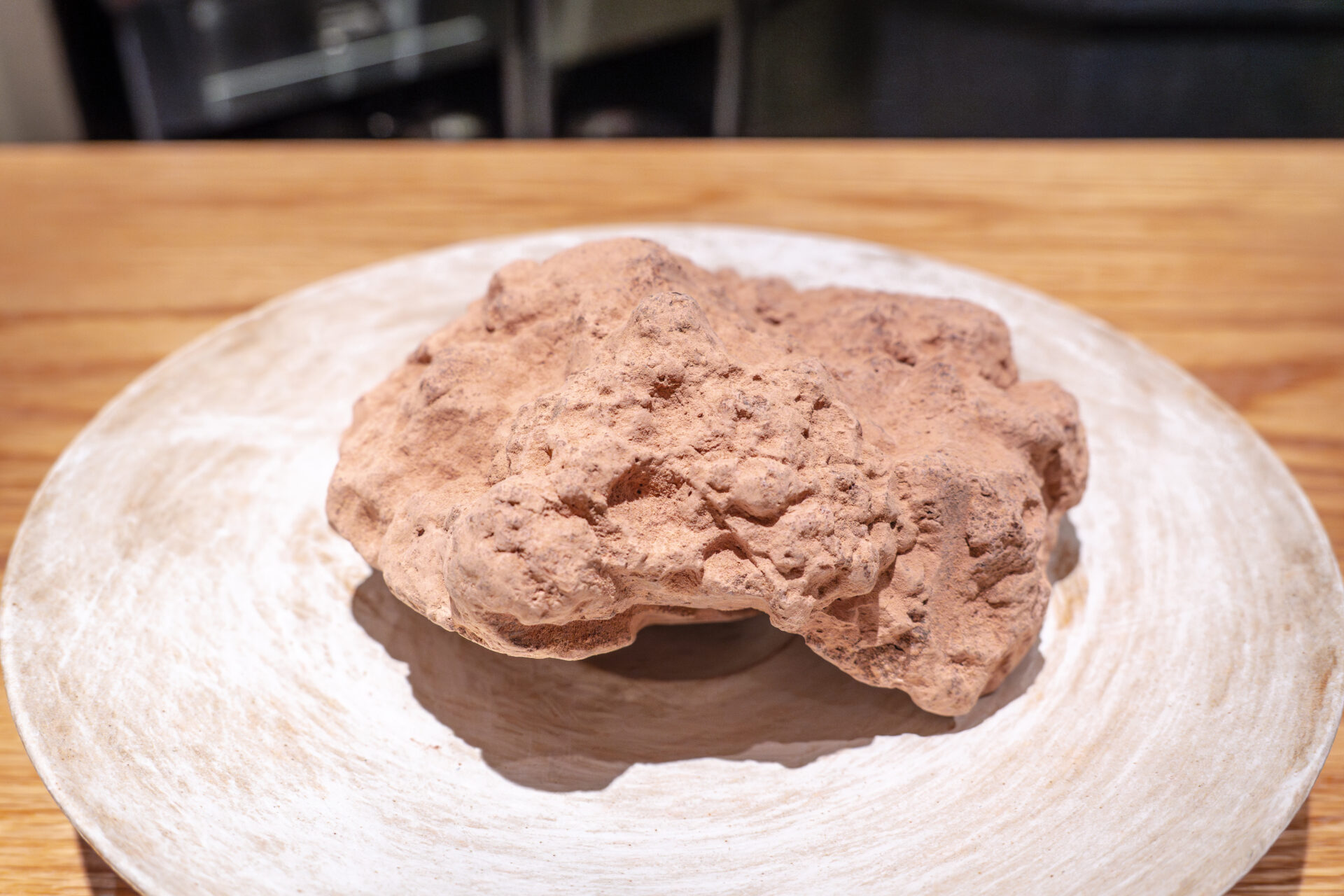
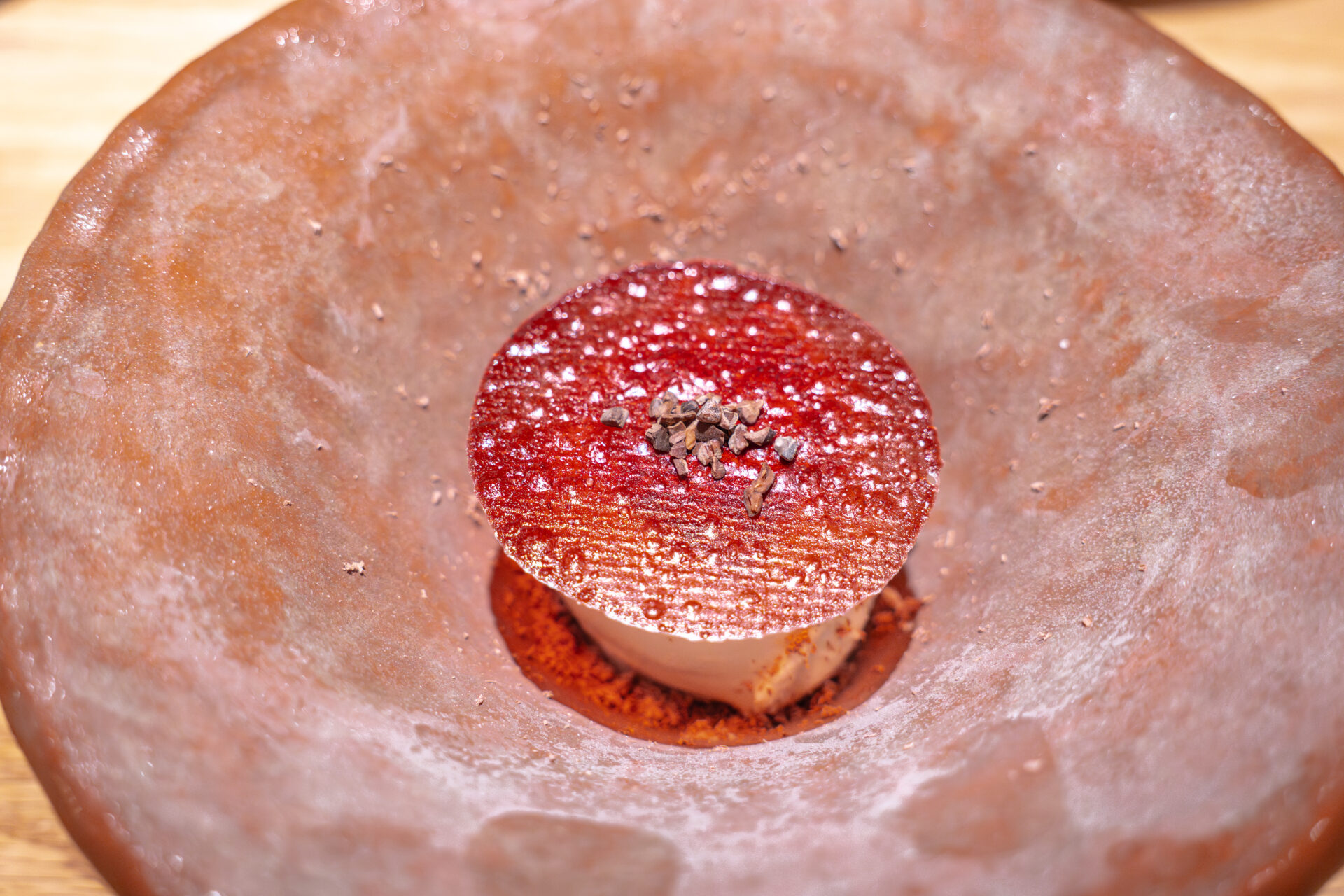
Hazelnut
The very last bite was a freshly baked financier. Crisp on the outside, moist inside—simple but unforgettable. It offered a gentle, warming conclusion to the meal.
(“If they sold these to take home, I’d buy them without hesitation…” the kind of flavor that lingers with you.)
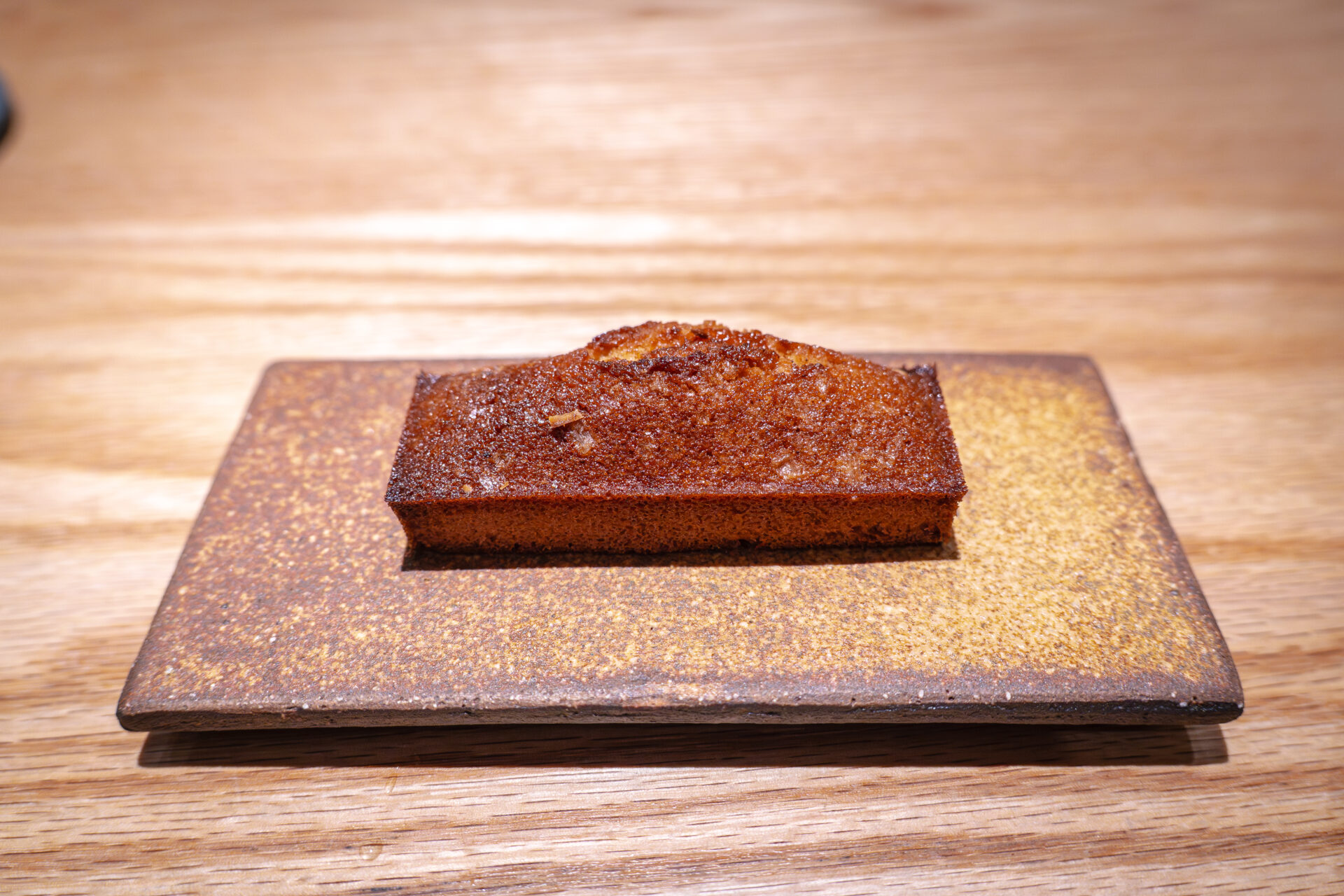
Overall Impressions
Lito’s cuisine, rooted in fermentation and guided by a finely tuned sense of acidity, impresses with its lightness and carefully structured flow. Each course is satisfying without being heavy, allowing the appetite to carry through to the end.
Beyond flavor, the experience is enriched by the visible teamwork behind the counter, with Chef Kubota at the helm. The atmosphere itself felt delicious. Seeing the fermenting ingredients mid-course offered an engaging glimpse into the kitchen’s creative heart.
From concept to execution, temperature to texture—everything struck a deeply personal chord. This is a restaurant I truly love.
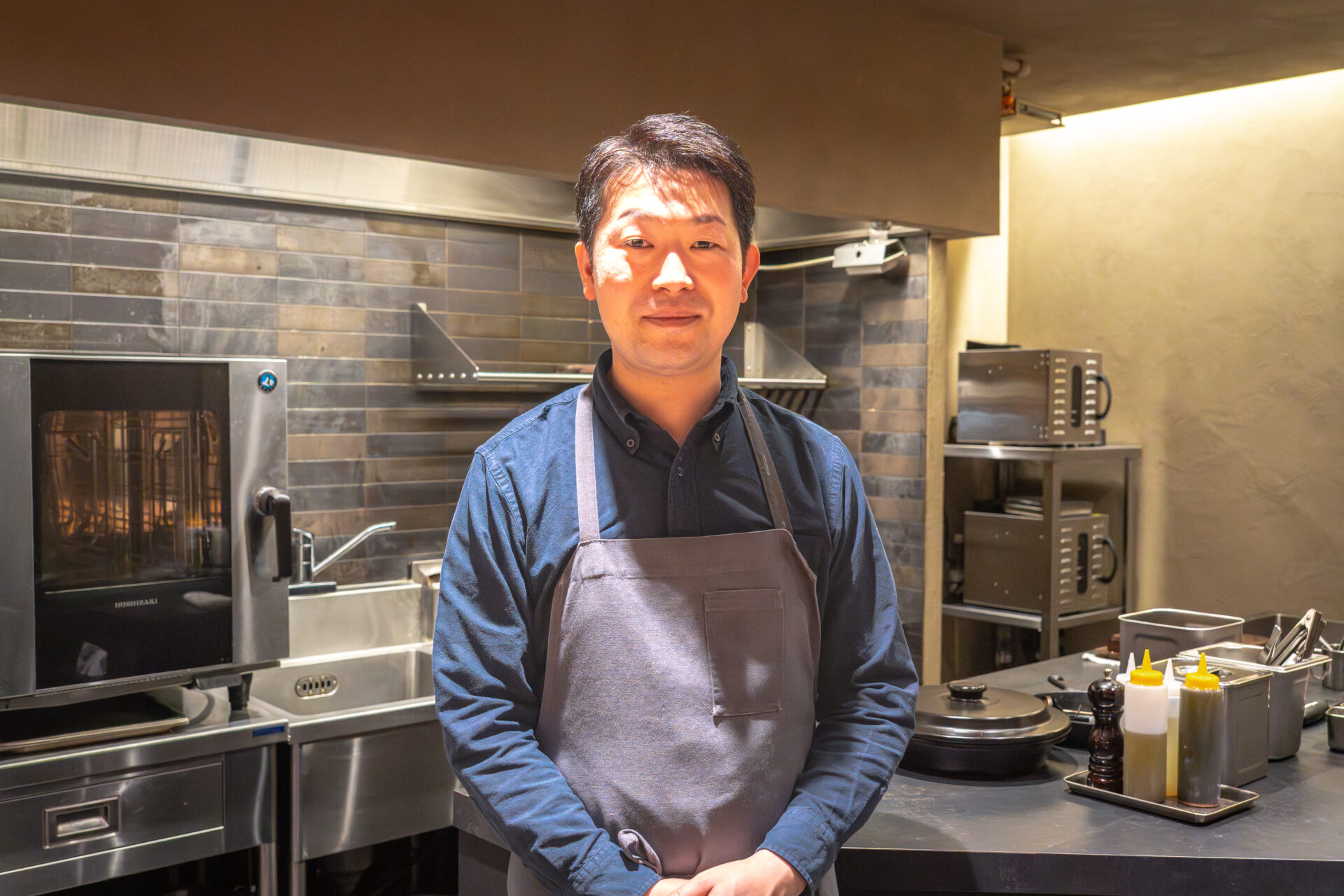
Reservation & Access Information
Reservation:
-
Advance reservation only.
-
Same-day bookings are not accepted.
-
Please notify the restaurant in advance of any allergies or dietary restrictions.
-
Bookings available via the official site (TableCheck):
Official Reservation Page (TableCheck) -
Choose your course and party size in advance; payment can be made either ahead of time or on the day.
Access:
Address:
2F, Daini Orange Hisaya Building
1-17-3 Izumi, Higashi-ku, Nagoya-shi, Aichi Prefecture
Nearest Stations:
-
5-minute walk from Hisaya-odori Station (Meijō Line)
-
5–6-minute walk from Takaoka Station (Sakura-dōri Line)
Business Hours:
-
Lunch: 12:00 start (Fridays, Saturdays, and Sundays only)
-
Dinner: 18:00 start (single seating)
Closed:
Mondays + irregular holidays (check official Instagram for updates)
- TAGS

